Text
Turner on the Rhine
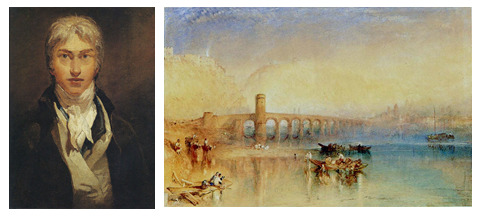
I have just got back from a six-day cruise from Cologne to Mainz on which I gave four talks about Turner’s visits to the Rhine. The first talk concentrated on his early life before his first visit in 1817. It described his training in life-drawing and from casts of classical sculptures at the Royal Academy Schools and contrasted this with the picturesque studies that he made as an itinerant artist and the works that he made in a sublime manner such as his portrayal of the Alps. It explored his use of classical imagery to represent the Napoleonic wars in his allegory of Dido Building of Carthage and The Decline of Carthage. More speculatively, it suggested that Turner may have deliberately used different classical modes in his landscape studies in the Liber Studiorum. In doing so it compared articular landscapes to the use of the Dorian, Lydian, Phrygian and Ionian modes by Reynolds, Joseph Wright of Derby and Elisabeth Vigée Le Brun respectively.
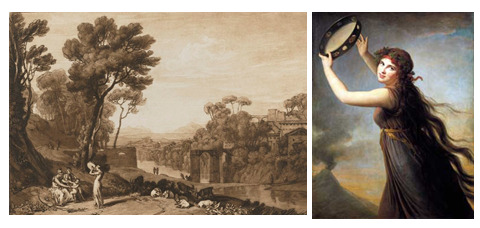
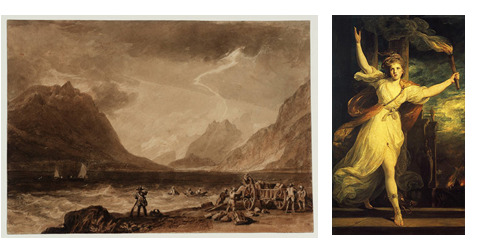
The second talk focused on Turner’s tour of the Rhine in 1817. It examined the evidence for how many of the 51 watercolours were made on the spot and how they related to the three notebooks of drawings that he made on the trip. It described the influence of John Gilpin on Turner’s use of striking viewpoints and compositional devices as well as his adoption of anecdotal imagery to depict medieval castles. It discussed the influence of the Grand Tour and the contemporary preoccupation with culture as a means to self-improvement and social mobility. It then related these to Northanger Abbey where Catherine Morland is impressed by Henry’s picturesque description of ‘foregrounds, distances and second distances….side-screens and perspectives…’


In the third lecture I described Turner’s use of the sublime and compared his portrayal of the Lake District, the Alps and Tintern Abbey to that of Wordsworth. I also talked about Turner’s work in the context of Caspar David Friedrich, Philippe de Loutherbourg and John Martin and explained how their use of vivid colours, rough surfaces and lack of detail related to what Edmund Burke called ‘a sense of pain and danger’. I compared the ideas of Goethe and Schiller to those of the English Romantics and examined the paintings which Turner painted on the Rhine in the context of the contemporary fascination with what Jean-Jacques Rousseau called ‘torrents, rocks, firs, dark woods, mountains, rough tracks and precipices’.

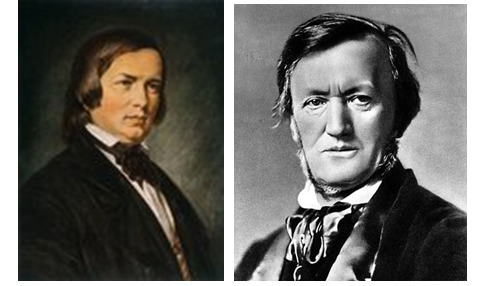
In 1839 a crisis in the Middle East prompted France to threaten to extend its borders to the Rhine. This inspired 400 patriotic musical works by German composers in the decade that followed. More than ever the Rhine came to epitomise what Friedrich Schlegel had called ‘memories of what Germany was and could be.’ The association of the river with restlessness and change became linked with the German concept of ‘the people’ as a community united by blood and by a shared identification with nature. I described how this organic narrative contrasted with the concept of nationhood promoted by the French Enlightenment in which citizens entered into a quasi-contractual relationship with each other that was based on the classical precedents of ancient city states. The relevance of such ideas to Turner can be found in his selection of subjects similar to those that were first made popular in the Rhenish folk songs collected by Achim von Amim and Clemens Brentano in The Boy’s Magic Horn of 1805. They were later taken up by popular composers in the 1840s and subsequently reworked by Wagner in The Ring Cycle. Among such subjects were the Lorelai Rock and the Drachenfels, which were immortalized by Schumann and Wagner and which had already become familiar to English audiences through the publication of Byron’s Childe Harald. The poem had been an important inspiration for Turner’s first visit to the Rhine since he had hoped to make a series of 36 prints of the Rhine, including several locations mentioned in the poem, until his plans were upset by the publication of Baron Johann von Gurning’s publication of A Picturesque Journey along the Rhine in 1819.

Other works inspired by Byron were Turner’s numerous depictions of the Ehrenbreitstein, the fortress where the young French general, Marceau, was killed and The Field of Waterloo, which Turner presented alongside quotations from the poet. His links to German thinkers can also be found in his portrayal of The Opening of the Valhalla, the classical temple dedicated to German heroes such as Arminius, who had defeated the Romans on the Rhine. The temple was completed in 1828 but its creator, Ludwig of Bavaria, was forced to abdicate in the European-wide revolutions of 1848 in which Wagner took to the barricades against the Elector of Saxony in Dresden. Another of Turner’s paintings with links to German Romanticism is his portrayal of Heidelberg, the ruined castle of the daughter of James I and the Elector Palatinate of the Rhine, that became a meeting place for German nationalists and for the collection of fairy-tales, folk-songs and legends.

My final lecture discussed the way in which changes in markets, materials and techniques affected the status and perception of artists associated with the Rhine at different periods. I looked at the work of Durer in the context of the invention of printmaking; Turner in relation to the improvements in artificial colours and reprographic techniques that were devised during the industrial revolution and Gerhard Richter and Andreas Gursky in the context of digitization.
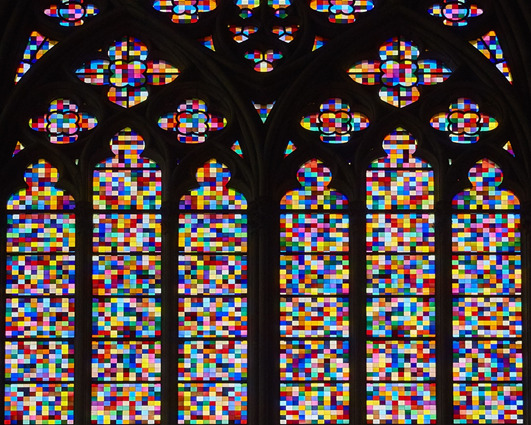
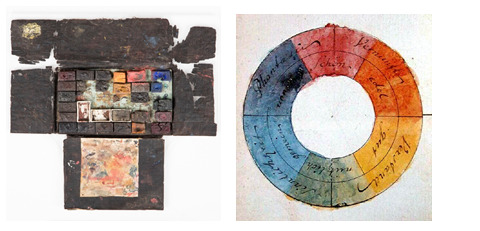
I talked about Turner’s adoption of bright, ready-made colours after 1815 and described the travelling pouch that he adapted to carry them. I described his debt to Goethe’s manual, The Art of Colour, which he carried with him on his painting trips. I also talked about the transition that took place in Turner’s life from the delivery by artists of commissioned works to ones that were made speculatively and exhibited to a paying audience in mixed exhibitions at the Royal Academy. I compared the incentive to use sensational effects to Philippe de Loutherbourg’s charging of admission to view his scenes of the Battle of the Nile and Beethoven’s arrangement of large and spectacular concerts in which audiences were able to hear the thunderous effects of the new iron-framed pianos. At the same time I described Turner’s continued dependence on the lessons that he had learned as a young man from his fellow itinerant artists - Thomas Girtin, John Sell Cotman and Alexander and Robert Cozens. For in his frequent visits to the Rhine, he was not only returning to the locations of his youth but revisiting earlier experiments with materials and techniques in ways that evoke a life-long vinyl enthusiast leafing through his record collection.


One of the delights of the cruise was the opportunity to visit museums and galleries such as the Middle Rhine Museum in Koblenz, the Ludwig Museum in Cologne and the Guttenburg Museum in Mainz . We also visited the cathedrals of Mainz and Cologne, where we saw Richter’s great tribute to Goethe in his stained glass window of 4,900 digitally produced colours. Performances by musicians and entertainers, good company and perfect weather added to the experience. Since I would gladly do the cruise again, I would be grateful if anyone who went on the cruise or who would like to receive information about forthcoming river cruises on which I might speak to email me their comments. You can do so by by using the Contact button on my website at https://www.geralddeslandes.com/
0 notes
Text
The Botanic Garden & AI: Almost Human

One of the most interesting works in the new Barbican exhibion AI: Almost Human is a set of computer generated reproductions of botanical illustrations similar to those represented during the Golden Age of Dutch painting. Coincidentally, I visited it while reading Ian McEwan’s novel Machines Like Me and preparing a talk about botanical gardens in the Enlightenment.Scores of these were founded either for medicinal or scientific reasons or, increasingly, in the pursuit of new materials or processes to fuel the Industrial Revolution.

At first sight the Barbican piece looks like a typical byproduct of Saussure’s linguistic theories, which imply that images should be seen in the context of other similar ‘signifiers’ that have been organised into ‘a system of differences’. In this way it resembles other structuralist works such as Yukinori Yanagi’s Pacific of 1996, in which he brought together the flags of all the countries that had intervened in the South Seas as ‘words’ in order to reveal the overarching ‘language’, which is their colonization of the region. Another and perhaps more telling comparison are Warhol’s prints of Elizabeth Taylor, Jackie Kennedy and Marilyn Monroe. For on one level the artist seems to imply that just as it is possible to identify both particular illustrators and particular plants through their common features, so too is it possible to categorize the language of sixties’ pin-ups in terms of hair and lips and make-up.
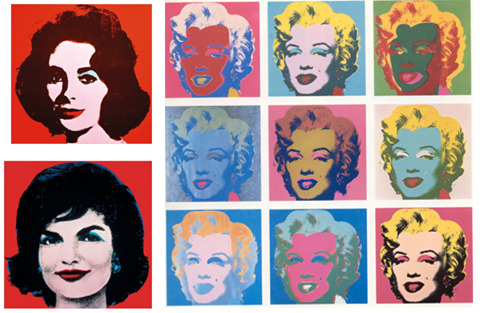
What interests me in particular, however, is that the grid-like arrangement of such works mirrors the famous depiction of Linnaeus’ classification of plants by George Ehret, who was associated both with the Chelsea Physic Garden and Kew. His drawing inspired a host of other Enlightenment taxonomies from the Encyclopedia’s classification of knots to the portrayal of Mary Anning’s trilobites.
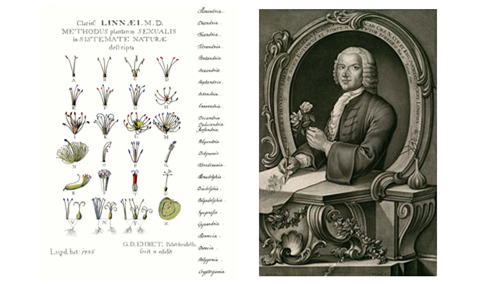
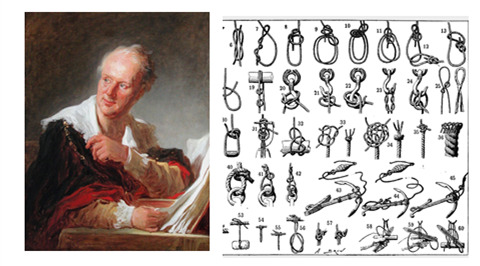

The Chelsea Physic Garden is known to have influenced the portrayal of the dinner services that Hans Sloane commissioned from the Chelsea Pottery. It may also have influenced the flat monochromatic patterns that began to appear in wallpaper and ceramics. Such patterns were well-suited to mass production and the elimination of waste since the repetition of small motifs meant that they could easily be made up and repaired in case of damage. Likewise, in the context of fashion the descriptions of the dresses worn by run-away servant girls and slaves in advertisements placed in American newspapers indicate how far floral patterns and mass-produced textiles became ubiquitous in women’s lives.

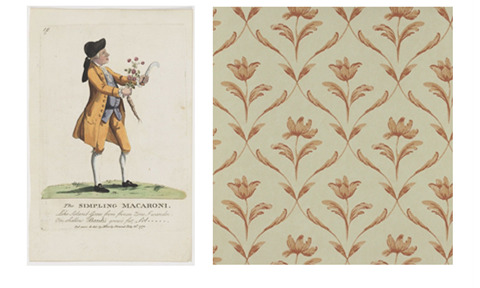
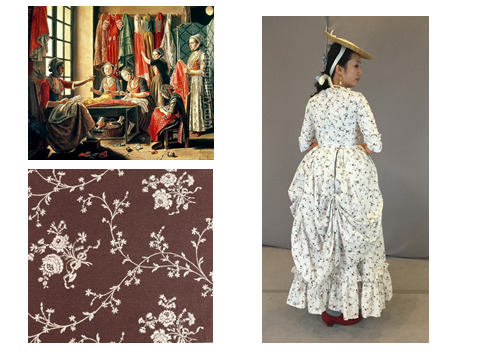
Even before the Enlightenment Dutch botanical illustrators had become synonymous with the passion for imported plants that reached its height in the tulip craze of 1636-37. In Machines Like Me Ian McEwan mentions the work of Antonie Philips van Leeuwenhoek who made powerful lenses in order to study natural organisms. His near contemporaries included Maria van Oosterwijck, Maria Sybilla Merian and Rachel Ruysch who benefited from the coincidence of economic speculation, technical innovations in printing and optics and increasing globalization, epitomized by the founding of the Dutch botanic garden in Cape Town in 1694. The parallels with the crash of the tulip craze and our own digital age are all too obvious. Although Merian died a pauper, Rachel Ruysch earned 1200 guilders for her works at a time when Rembrandt was rarely paid as much as 500. Meanwhile Maria van Oosterwijck was so confident of her own worth that she was able to reject the advances of Rachel’s tutor, Van Aelst, whom she agreed to marry only if he promised to work 11 hours a day for a year in order to keep her in a style to which she had so rightfully grown accustomed.
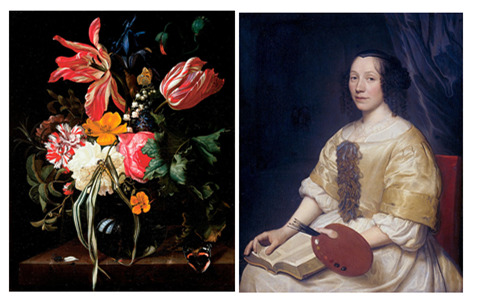
A century later Franz Bauer was making botanical illustrations using a microscope at Kew while his brother Ferdinand was accompanying Flinders to Australia and developing new ways of classifying the tones of exotic plants. Not only does his chart resemble Wedgwood’s account of his experiments of firing ceramics in kilns at different temperatures but it helps endorse the theory that our understanding of the world is determined by our ability to reproduce it.

As late as 1859 Britain was paying more than £50,000 a year to the Spanish for quinine and huge sums for the beautiful scarlet colours that they extracted from cactus-fed insects in Mexico. Economic botany was king. In Mauritius Ferdinand Bauer visited one of a network of French botanical gardens that stretched from Paris to the Caribbean. In 1788, the same year as the Mutiny on the Bounty, the French succeeded in bringing breadfruit from the Indian Ocean to present-day Haiti where its administrator Mozon seemed unusually willing to share his success with his English counterparts in Jamaica. In words that would have been worthy of Tim Berners-Lee, he wrote that: ‘the time has passed when nations have tried to monopolize the riches of nations. The flame of philosophy has dispelled the obscurantism that produces such an anti-social system’.

Unfortunately by 1793 his garden in Haiti had been almost extinguished in the cross-currents of the French revolution. Yet even before that, and despite the ongoing achievements of illustrators such as Mary Delany, Rousseau had begun to disparage botanical illustrators as mere ‘copyists’. Interestingly, when Charles Darwin’s grandfather, Erasmus, published his great poem, The Botanic Garden, in 1789 he seemed more confident of its success than when his grandson published a series of books about botany during the 1870s. One of Charles’s inspirations was his uncle John Wedgwood, who wrote to George III’s gardener in 1801 proposing the foundation of the Royal Horticultural Society. John also commissioned the beautiful botanical plates from the family firm that he gave to his sister, Suki, as a wedding present. ‘Nature repeats itself or almost does… ‘ Charles, no doubt, would have seen them on his mother’s dinner table, thus proving that unlike McEwan’s hero, Adam, one can pick up an enthusiasm for beauty even on one’s mother’s knee.
0 notes
Text
Going Underground
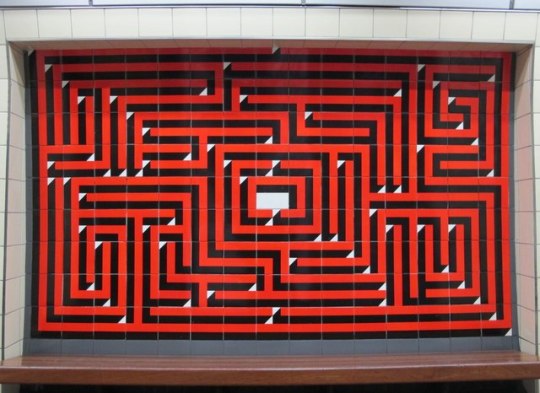
One small downside of all the glorious weather that we have been having in London is the hell that it brings to any journey on the tube. I have been preparing a series of lectures about how the stories of Greek myths are picked up in modern films and video games. The series begins with the theme of coming home and compares the image of the war- torn veteran, Odysseus, to the protagonists of Taxi Driver, Cold Mountain and Mafia III. The second lecture is about the changing representation of Venus, the Goddess of Love, from the erotic connotations of the shell in which she is born on Cyprus to the image of Marilyn Monroe smoothing her billowing skirts in The Seven Year Itch or emerging like Venus arising from the sea out of a gangster’s birthday cake in Some Like it Hot.
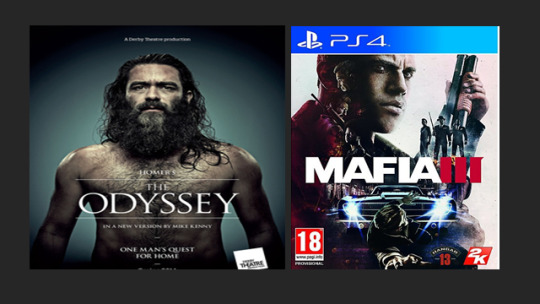
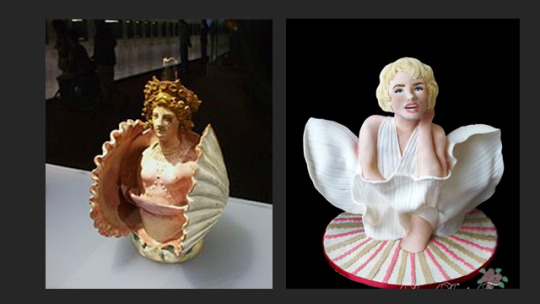
I had just finished preparing the third lecture about Theseus and the Minotaur when I stepped off the tube at Warren St and found myself confronted by Alan Fletcher’s 1967 mural on the station. Although technically a maze and not a labyrinth, the design is reminiscent of the concentric female sexual symbols that one finds on ancient rock carvings from Goa to Peru as well as in the portrayal of the Cretan story by the Italian ‘Master of the Cassoni Campana’.

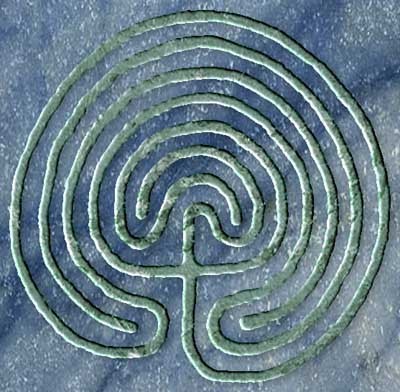
Theseus’s seemingly sexual penetration of this female labyrinth echoes the descent into the underworld by other classical heroes. In Jungian terms his katabasis is a necessary rite of passage that strengthens him as a hero and acts as metaphor for the individual’s maturity and change in status within the family.
In the story Theseus is brought up by his mother and hides his sword – or sexuality – from his pseudo-father before going to Athens where he eventually supplants him. He achieves this through sailing to Crete and slaying the Minotaur with the help of Ariadne. She gives him a ball of wool – another sexual symbol – in order to find his way back from the labyrinth. However, he abandons her on Naxos and replaces her with her sister, Phaedra. Theseus goes on to become an active hero while Ariadne becomes a passive heroine who falls asleep until the arrival of Dionysus who awakes her. In doing so, she appears to achieve her own successful katabasis in ways that are analogous to that of Persephone, Eurydice or Psyche. Sleeping or waking - dying or being reborn - all four are depicted in ways that are clearly associated with the rebirth of spring.
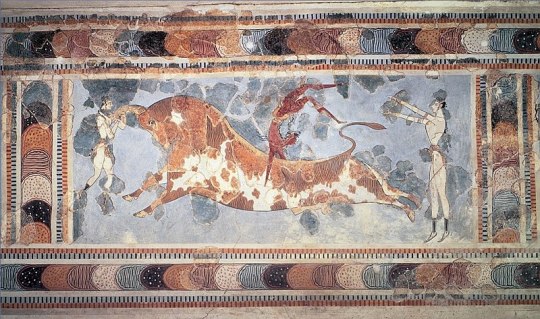
What is interesting is how the story then relates to the famous Cretan mural of figures leaping bulls. This has often been associated with the tribute of young men and girls paid by Athens and suggests an obvious similarity to the Hunger Games. But even more intriguing is the similarity of the beautiful plumed male figure at Knossos to the depictions of ball games and human sacrifices that occur in Mayan artifacts. This might suggest that the Theseus story and the ritual bull-leaping are not only connected to the overthrow of the Cretan hegemony but of a Cretan female fertility cult for which the Dionysian imagery on the golden rings at Knossos provide further circumstantial evidence .
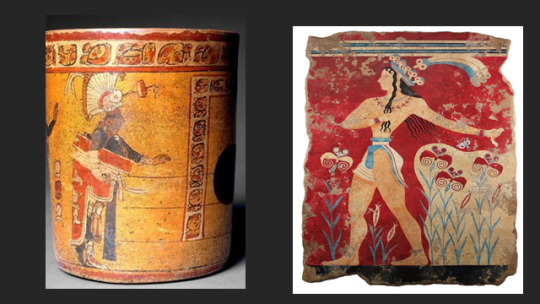
The story of Dionysus’s waking of Ariadne also evokes the stories of Sleeping Beauty and Beauty and the Beast, as is suggested by the famous Vatican sculpture of her and by De Chirico’s haunting re-working of it complete with labyrinthine arcades and a Minotaur-like train.

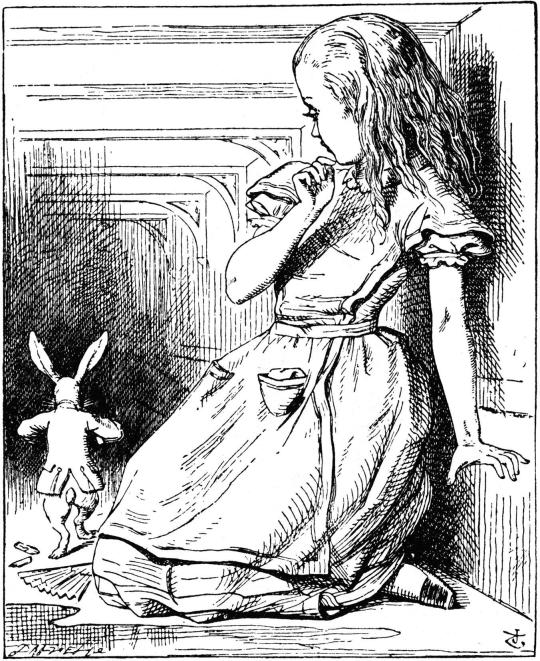
The current exhibition of Picasso’s Vollard suite at Tate Modern provides a further reference point since during the nineteen-thirties the artist created dozen of works about the Minotaur during the break-up of his marriage. Several of these show him being forced to choose between Ariadne and Phaedra just as he was forced to choose between his current mistress and his wife and child. Indeed the self-indulgence with which Picasso treated his sometimes predatory relationships with women evokes a range of ambivalent labyrinthine personae from the White Rabbit to Hannibal Lecter and Guillermo del Toro’s Faun.


Two other themes to which the labyrinth refers are the disorientation of the city and the impenetrability of the detective story. Paul Auster’s The New York Trilogy combines both since, like its cinematic equivalents, Angel Heart and Shutter Island, it explores a world in which the narrative is unresolved and the quarry becomes confused with the protagonist himself. In the case of the films mentioned this confusion is often conveyed through nocturnal or subterranean imagery. When it comes to the movies, however, the most convincing Cretan-inspired story is undoubtedly The Matrix where the Theseus-Ariadne-Minotaur relationship is played out by Keanu Reeves, Laurence Fishbourne and Carrie-Anne Moss. Re-watching the movie twenty years on, its apparent allusions to the coming of the internet seem prophetic. Indeed, as the story shifts like the ubiquitous elevator in the film to yet another level, the metaphor becomes as obvious as the writing – or should I say the numbers? - on its wall.
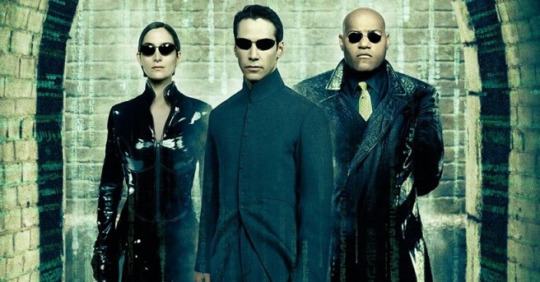
0 notes
Text
Game of Thrones

The recent publication of a book by the White House photographer, Pete Souza,and the concurrence of two exhibitions at the Royal Academy and the Queen’s Gallery have made me wonder what President Obama’s resident court photographer might have taught the Stuarts. Both Charles I and Charles II used visual images to enhance their authority at a time when artists were transferring the language of religious and classical art to the court. The former can be seen in their use of ceiling paintings, ceremonial canopies and quasi-religious family portraits; the latter in their portrayal of triumphal arches and processions. Artists lent gravitas to royal weddings, coronations and engagements through allegory, gesture, movement, light and colour. This theatrical approach coincided with the development of different kinds of imagery to represent rulers in their public and private moments. Throughout Europe the phenomenon was mirrored by the appointment of offices such as the Master of the Bedchamber and the Minister of Finance. It was also fetishized in the ritual of the monarch’s procession to church and his subsequent withdrawal into a private pew.
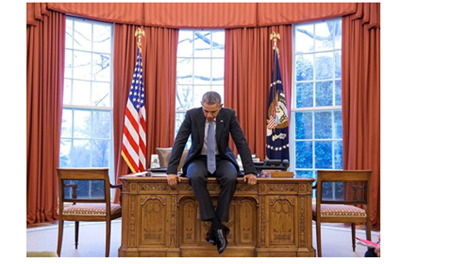
In Protestant England the introduction of baroque devices from Catholic Europe was inevitably controversial. Elizabeth had used the virginal imagery of the Queen of Heaven to underpin her monarchy. In the Eikon Basilike Charles I’s execution was portrayed as a via dolorosa in a publication that went through 35 editions. Henrietta Maria, Catherine of Braganza and Mary of Modena were all Catholics and favoured Catholic artists. Even Catherine Hyde, James II’s first Protestant wife, commissioned Lely to include the Countess of Gramont as St Catherine and Nell Gwynne as St Agnes among his 11 ‘Windsor beauties’. Meanwhile the use of prints for propaganda had greatly increased during the divisive Civil Wars and Commonwealth and became even more pronounced after the Restoration. Pepys alone owned 42 images of Charles II. The two attempts on his life, the Popish Plot and the Rye House conspiracy, were both commemorated by the printing of playing cards. Prints were probably also used as templates for ceramic souvenirs of the king and during the Plague to explain the need to stay in the city and to bury the dead at night. Less successful was Wenceslaus Hollar’s portrayal of London Before and After the Fire through the clumsy device of erasing a number of church steeples from his earlier plate. This failure reflects the absence of a visual language in which to present a city whose centre had lost 85% of its buildings. Photo- journalists during the Blitz got round this through anecdotal images such as a cheeky chappie delivering milk. Pete Souza resorts to the even simpler expedient of photographing Obama in front of emergency services.
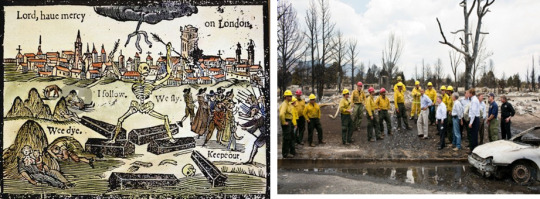
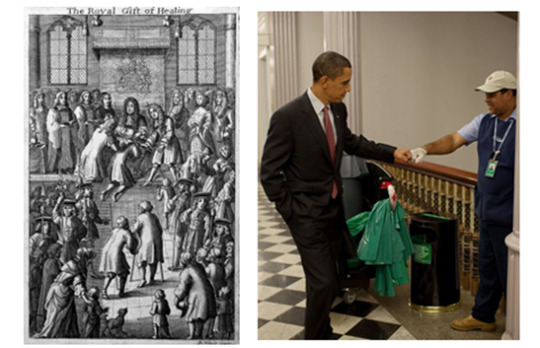
In this context Charles II’s easy tactile charm, like that of Obama, is in marked contrast to his ever-miserable father. The Merry Monarch’s ‘Christ in Majesty’ seated portrait is untypical and sits badly beside the informality of Obama as a serial abuser of office furniture. During his reign Charles II touched 10,000 of his subjects for ‘the king’s evil while Obama - when not fist-bumping injured veterans or passing members of the White House staff - is shown hugging people in 25 of Souza’s photographs. Meanwhile the telescoping of the distance between leader and led is demonstrated by the image of Obama dancing with his wife two days after his inauguration. When Charles was portrayed at a ball on the eve of his return to England, Pepys estimated that he had 17 mistresses.

In the dozen photographs that show the president with the military, the relationship is complex. Pete Souza captures the traditional image of a royal apotheosis as the presidential couple disappears into the blue belly of Air Force One. In a photograph that recalls Charles I’s painting by Titian of Alfonso d’Avalos addressing his troops, Souza positions himself looking up at the president as he delivers his rock-star address to cheering troops at Camp Victory. In contrast he portrays the soldiers as if seated above him as they listen to Obama’s sober announcement of his decision to send more troops to Afghanistan. Where possible, the pictures show the president among women soldiers and junior ranks. Yet during the live monitoring of the mission against Bin Laden, he shows Obama side-lined anxiously among the top brass. I counted more than 30 pictures that focus on Obama’s skills as a team-player and nearly a dozen of him as an isolated figure in a sombre moment of decision-making. Not only does the Bin Laden photograph conflate the two, it contrasts a chilling portrait of the fourteen-year old Charles as a martial figure callously surveying the imaginary battle field around him.
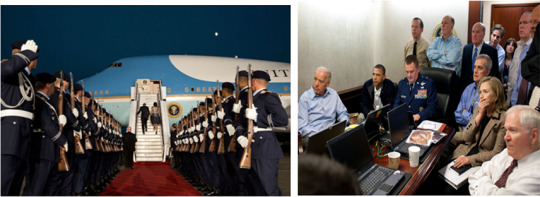
Such photographs pose the question of how much any American president can slay real-life dragons and the extent to which he is largely a figurehead in moments of crisis comforting the victims of floods, fires, shootings and terrorist incidents. Compare, for example, Ruben’s casting of Charles I as St George with Obama’s meeting with the 83 year-old survivor of a mid-west deluge. Two women perch like apocryphal nymphs on the bonnet of a car while an equally heraldic figure clutches a flag. Like the images of Obama at the Martin Luther King Monument, sitting in the Rosa Parks’ bus or crossing the historic bridge at Selma, the photograph appears almost overloaded with allusions. It seems a million miles from those of the president sliding casually across the counter to greet the workers at the Shake Shack or mischievously tipping the scales of one of his assistants as he weighs himself. Yet, if not all the 300 images in the book have been deliberately constructed, each has been carefully chosen to affirm a different aspect of the president’s PR image.
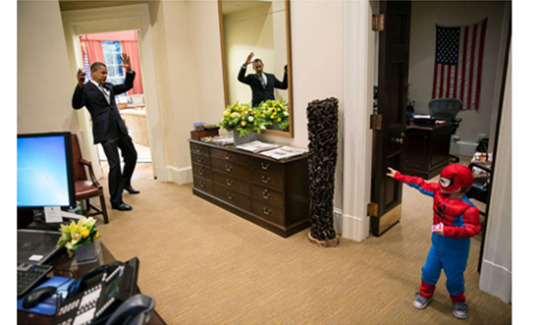
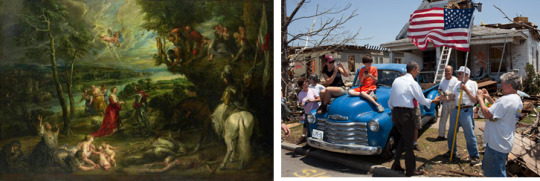
Among other categories, I counted 40 showing the president with his family and 18 of him waving a fishing rod, a golf club or a basketball above his head. Several are of him competing with his aides in ways that recall the Stuarts’ display of horsemanship as a metaphor for their ability to rule. As so often, these equestrian portraits imitate earlier ones by Titian and Rubens. Despite the unhappy precedent of Nixon’s schmaltzy broadcast about his children’s affection for their dog, Checkers, there are five photographs of cosy canine domesticity. It is interesting to compare them to the Stuarts’ love of fairy-tale beasts, which themselves recall the massive, vinegary hunting dogs of Titian and Velasquez.
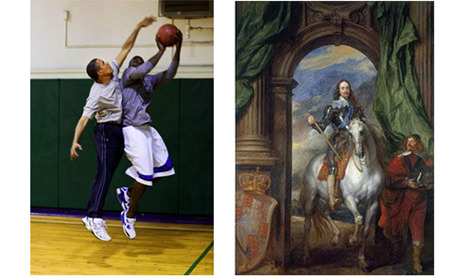
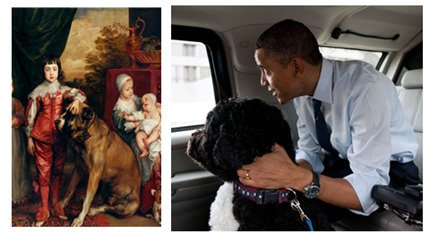
As a constant presence at the White House, shooting more than two million pictures throughout the presidency on cameras with a recycle time of only 0.14 seconds, it might seem that Pete Souza has all the advantages. For example, he is able to respond quickly when the president drops Hillary Clinton’s briefing notes or step in to capture dozens of unrehearsed moments when Obama is playing with small children. This gives Souza’s pictures an intimate quality that is the opposite of the distancing effect of the Stuarts’ ‘carpet-and-curtains’ paintings.The latter were deliberately used to separate and encapsulate the figures and are derived from religious baldacchino. In contrast Souza pulls back an actual curtain to show the Obamas behind-the-scenes before a speech, frames in a doorway or surprises him wrestling with his bow-tie in a lift. These apparently off-duty moments appear as artless as the sentimental ‘family snaps’ of him enjoying a TV dinner, playing with his daughters or romancing Michelle.

Obama’s rolled up sleeves belie his pin-sharp elegance just as his occasional display of a dorky sense of humour conceals his obvious intelligence. Michelle Obama is the perfect accomplice in portraying him as an ordinary average Joe. Yet he is constantly aware of and responding to his surroundings. Look at his mirroring of the body language of Pope Francis, the King of Saudi Arabia, the Dalai Lama or Chancellor Merkel. He looms over President Putin and Benjamin Netanyahu and only seems uncomfortable when standing next to Bill Clinton, uncertain as to whether to dominate or defer to that other arch-communicator. For the record Charles I was 5’4; Putin is 5’ 7’’; Obama is 6’ 1’’; Clinton is 6’1.5’’ and Donald Trump is 6’2’’. Yet, as ever, Pete Souza is there to work his magic when he photograph him with Trump, choosing the right angle to make him appear slightly taller.

In an age of fake news such simple devices seem more authentic than the technical trickery that is now associated with digital photography. So too does the mixing of the rhetoric of official portraits with the deliberate cheesiness of the family album. Souza presents Obama in a liminal space between the formal and the informal, the statesman’s portrait and the instagram selfie. More cleverly still, he reveals the joints between the two. An obvious example of this is when he captures Obama just before his inauguration, smiling self-deprecatingly at his immaculate image in a mirror.
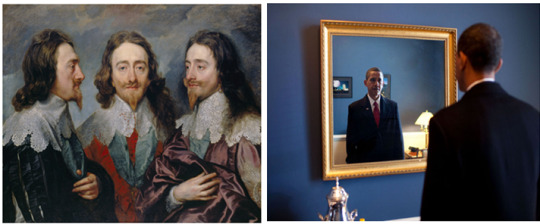
What is telling is that much of the same is true of the best of the Stuart portraits. Rubens, Van Dyck and Lely all learned from Titian’s brushwork and from his ability to convey a range of senses. This comes across in the invasive sniffing of the wolfhound in his portrait of Charles V, Rubens’ gargantuan feasts or Van Dyck’s focus on the hands of Charles I as he tugs fretfully at the ribbon between his fingers. Of the three Flemish artists, Van Dyck probably learned most from the courtly tradition of Flemish textiles and their ability to weave the everyday doings of kings into the stuff that dreams are made of. His Charles I in the Hunting Field is a masterpiece of allegory, using not just the symbolic poses of the theatre but the textured brushwork that we associate with scenery to place reality at one remove. The same is true of Titian’s Mars and Venus of 1580-85 at the Royal Academy in which the artist actually presents the landscape behind the couple as a tapestry. The embroidered flowers in the background pick up the painted flowers on her skirt while both are echoed in the decorative border curling between the two. If you look carefully, you will see that these three paradigms come together in plain sight just to the right of the goddess where Mars is helpfully peeling or un-peeling Venus’s robe. Pete Souza himself might acknowledge it as an analogy for the way in which his own photographs mix reality and illusion. Yet in his case he would probably argue that - unlike whoever has now become the president’s court artist - at least he told us the truth about who was sitting on his knee.

0 notes
Text
Paradise Lost

For the last couple of years, I have offered a study day of three talks about the representation of the South of France by artists from Cézanne to Picasso. One aspect of this is the way in which painters transposed an image of Edenic innocence and sensuality from the South Seas to Provence. The story begins with the astonished delight of De Bougainville’s sailors at the ease with which Tahitian women regarded their own nudity. It continues with Diderot’s response to De Bougainville’s memoirs in which the critic contradicts the Biblical associations of ‘naked and ashamed’ with the assertion that ‘obscenity is not a naked Venus but a Venus with her skirts tucked up’. The link between the exoticism of such 18th century thinkers and the paintings of Gauguin and Matisse is the poetry of Baudelaire who visited Mauritius and Réunion in 1841 on a voyage whose influence lingered on into the Fleurs du Mal.
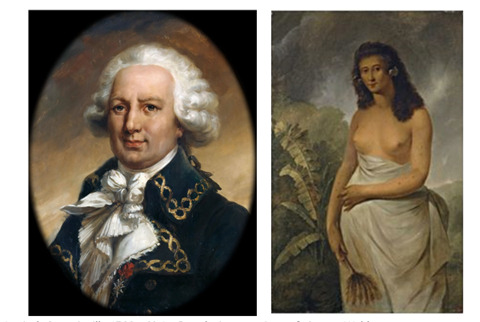
I was thus delighted to have the opportunity to visit both islands as a speaker on a pre-Christmas cruise to the Indian Ocean where I gave a series of talks about the history of maritime exploration from the Vikings to Captain Scott. One of the three talks, which I am now offering as a study day, was about artists and plant collectors in the South Seas and their influence on the Enlightenment and the Industrial Revolution.
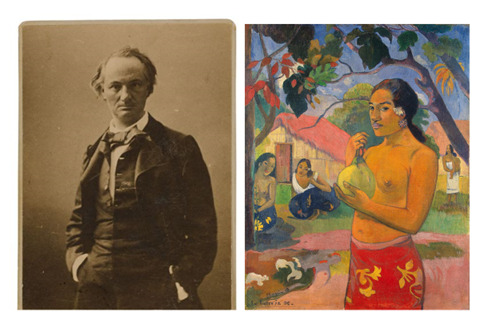
The talk included a reference to the botanical gardens in Mauritius, which were established in 1770 and which are the oldest in the southern hemisphere. They contain a plaque with a quotation from Bernadin de Saint-Pierre, the author of Paul et Virginie of 1788. This steamy Rousseauesque novel is about two small children who are brought up by slaves in the Mauritian forest and fall in love in a plot that has much in common with that of The Blue Lagoon. ‘The discovery of a useful plant’ claims the plaque in words that might have been written by Saint-Pierre’s British counterparts, Daniel Solander on the Endeavour or Flinders’ botanical illustrator Ferdinand Bauer, ‘is more valuable than a gold mine and worthier of praise than the excavation of a pyramid’.
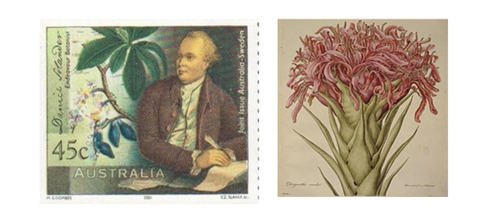
Through a chance meeting with Emmanuel Richon, the curator of the island’s Blue Penny Museum, I discovered that Baudelaire met a sugar planter, Autard de Bragard, in the botanical gardens that had been planted by Pierre Poivre. His wife, Emmeline, inspired one of his most beautiful poems La Dame Créole. She in turn employed a wet nurse whom Richon argues was La Belle Dorothée, the Malabaraise with whom the twenty-year-old poet had an ‘affair’. Baudelaire in an image reminiscent of Gauguin described the skin of his mistress as smelling of coconut, vanilla, benjamin and spice: scents that appear frequently in poems such as Parfum exotique and that one is still encouraged to smell in the botanic gardens.

In early editions of La Malabaraise, Baudelaire includes the word ‘Esclave’ in its title. Richon points out that if the ‘affair’ occurred on Réunion, as has often been suggested, the relationship would literally have been that of master and slave since the practice was not abolished on the French colony until 1848. However, if it occurred in the then British colony of Mauritius, Dorothée was probably one of the first indentured labourers who were brought to the island, mainly from India, after Britain’s abolition of the ownership of slaves in its colonies in 1834.
I saw an interesting exhibition about indentured labour at the Aapravasi Ghat, World Heritage site where new arrivals underwent a medical inspection and had their identity photographs taken. Michel Foucault described such photographs as the stereotypical invention of the industrial revolution since they enabled employers to divide and categorise workers in a pseudo-scientific way. In 1834 the British Secretary of State described indentured labour on Mauritius as ‘the great experiment’ and certainly there is something chillingly mechanical about the way in which the workers were cheated of their wages, forced to spend a fifth of their earnings on their return passage at the end of their five-year contract and charged high prices by their employers for the essentials that they needed. It was only when the young Ghandi visited the islands on his way back from South Africa in 1897, that a campaign was launched that led to the end of the system in 1910.
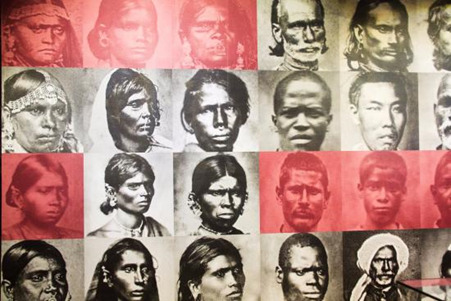
Although there is little doubt that Baudelaire’s relationship with La Belle Dorothée was exploitative, its exact nature is still in question. Baudelaire describes her sauntering along the beach with her naked feet leading her wherever they pleased. Yet elsewhere he writes that newly freed slaves tended to buy shoes as a mark of their liberty, implying that she might have still been a slave. Such distinctions are important given that 70% of the population of Mauritius is now descended from the 240,000 indentured labourers that were brought to the island.
By chance, while I was there the immigration sheds at the Aapravasi Ghat were being used to house an international festival of environmental art. It struck me that it might well have appealed to Bernadin de Saint Pierre since it addressed many of the challenges now facing the islands. Among the pieces were digitized versions of botanical art and a piece by a local artist about the displacement of so-called ‘boat people’ through international conflicts and global warming. I talked to a French artist, Naziha Mestaoui, who had created an installation, which encouraged visitors to plant a virtual tree on a screen. She has done similar pieces in other parts of the world and explained to me that an international bank had undertaken to plant a real tree on the island for every visitor who took part in the installation and to keep them up to date about its progress if they left their email address.

The immense wealth that sugar brought to the islands through the introduction first of slavery and then of indentured labour created a surprisingly sophisticated colonial art market. Tristan Bréville, a photographer and the curator of the Museum of Photography on Mauritius, told me that around 1840 a German resident planter, Ferdinand Whohritz, bought one of Daguerre’s first cameras and encouraged the establishment of a photographic studio two years before another one was established in the southern hemisphere. He even claimed that its proprietor, Chambay, may have photographed Baudelaire at the time of his visit.
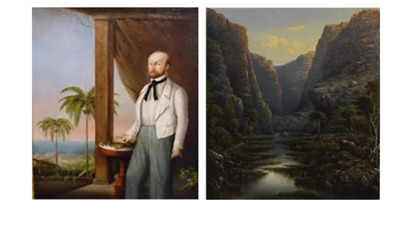
Such assertions are, of course, difficult to prove. What is more certain, however, is that the portraitists such as Arthur Grimaud were active on Réunion in the 1840s and that landscape artists such as Adolphe Le Roy were trying to make sense of its misty, vertiginous interior as early as the 1880s. It is quite possible that Le Roy may have met Ambroise Vollard, who moved from Réunion to Paris in 1885 and whose collection - including works by Picasso, Gauguin and Van Gogh - is now at the Musée Leon Dierx on the island. It is extraordinary to think that the purchaser of Gauguin’s Masque Sauvage of 1894-95, one of the earliest examples of ‘primitivism’ by a European artist, should have grown up in the landscape that helped to inspire Baudelaire. Perhaps, the art dealer, who sold a highly influential Cézanne bather to Matisse in 1897, had a particular affinity with the poet’s celebration of ‘luxe, calme et volupté’. If so, he might have been amused when the artist borrowed the poet’s words for the title of his own definition of the good life of Provence.

0 notes
Text
Hugo and Delacroix
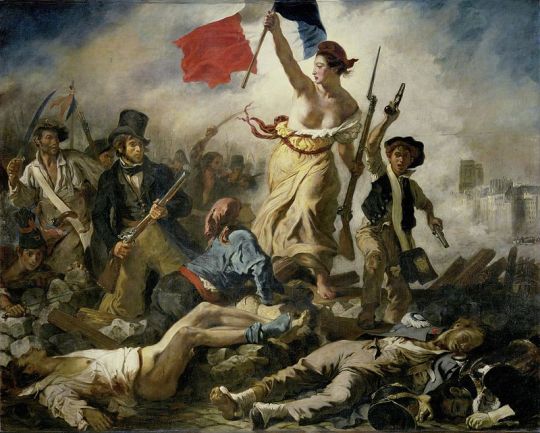
There is an interesting detail that links Tate Modern’s exhibition, Red Star over Russia, with Tate Britain’s Impressionists in London. It is an allusion to Delacroix’s Liberty Leading the People which appears next to a rough sketch of the storming of the Bastille in one of the propaganda images of the October Revolution. The reference is hardly surprising since in the decade after 1917 Soviet designers created a revolutionary narrative that linked the October uprising to the turning points of 1789, 1830 and 1905. They then mirrored it with a similar narrative hagiography linking Marx, Engels, Lenin and Stalin from which the latter’s rivals, Trotsky and Zinoviev, were famously airbrushed out.
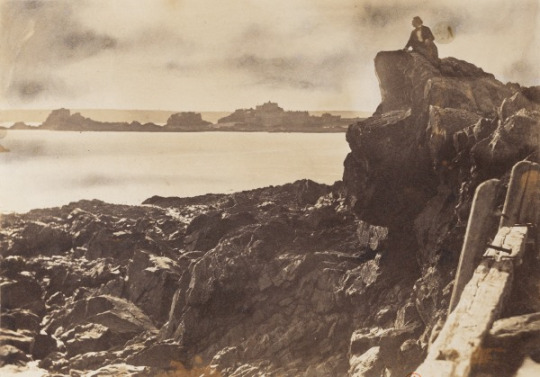
Although thee are no references in the show to the Siege and Commune of 1870, from which so many artists fled to Britain, it is possible to link them through the figure of Victor Hugo. In 1830 he wrote The Hunchback of Notre Dame while the bullets of the 1830 uprising, he subject of both Liberty’ and Les Misérables, were literally whistling though his garden. He witnessed the barricades in 1848 and in 1870 dined on bear and elephant from the zoo while organizing poetry readings to raise money for the siege.Some of Hugo’s poems were written in Jersey, which together with Guernsey was the scene of his self-imposed exile of 18 years after Napoleon’s coup of 1852.
I have been reading his memoirs, which contain a detailed account of the events of 1848. In one he describes a revolutionary stealing the coat of a royal coachman that he had murdered. In another two prostitutes climb over the barricades and raise their skirts above their heads, before being shot by government soldiers. Such descriptions are evocative of Les Mis’ as well as of Delacroix’s masterpiece, which had been hidden away shortly after its purchase in 1831 but which was shown again briefly after 1848. The implication seems to be that Hugo must have seen it and that it influenced his memory of events or that the brave prostitutes were simply imitating art.
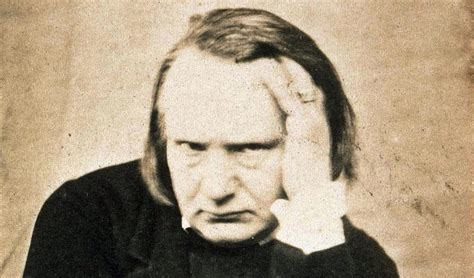
Delacroix’s creation of Liberty Leading the People from eyewitness accounts, prints and portraits of friends and prints is well-known. So too is his assertion that ‘if I haven’t fought for my country at least I shall paint for her. During his exile Hugo was exposed to violence when, as one of hundreds of political exiles in Jersey, he took part in the trial of a French government spy whom he narrowly helped to prevent from being executed.
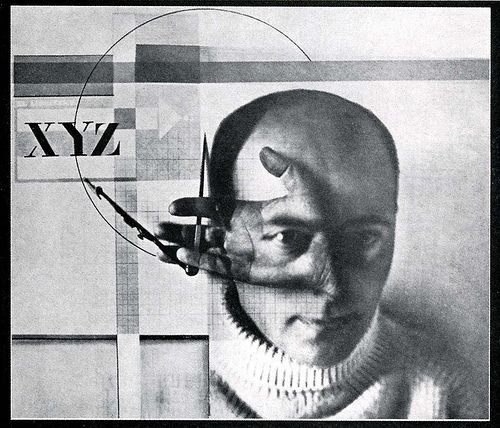
Like Hugo, many of the artists of 1917 fell victim to Stalin’s repression and to the demand for more conventional propaganda, which fills most of the show. The exception was El Lissitsky who designed the iconic Beat the Whites with the Red Wedge of 1919. The clarity with which his red triangle pierces his white circle set the benchmark for Soviet propaganda. Its use of the universal language of geometry and of a cheap two colour palette is succinct and diagrammatic. In this case it both expresses the struggle of the red army against the conservative whites and identifies the spirit of artistic innovation with the revolution.

The duty of the avant-garde art to support political change was something that Hugo believed in and that he embraced in the photographic works that his son and his friend Vacquerie made in Jersey. His plans to use them in a book about the island may have come to nothing. But they are strongly reminiscent of images by photographers such as Gustave le Gray who accompanied Alexander Dumas to Sicily in order to fight with Garibaldi’s red shirts.
No doubt Delacroix would have been cynical about all this. After 1848 he wrote about ‘the blind confidence of (his) generation …. in the coming of some kind of new era of humanity…..that has brought society to the edge of an abyss….an imperious need to do something better or something different from what had been done before’. I am sure he was right but then, like El Lissitsky, he died quietly in bed.
0 notes
Text
Art in Context
I have just got back from a lecture tour from Adelaide to Sydney. After 21 talks in 24 days – not to mention 19 lunches and 16 dinners with members of the various committees - I was bound to have become a bit disoriented. But, perhaps, this feeling may have been exacerbated because the itinerary, which had been worked out with great skill by the Association of Design and Fine Arts Societies of Australia, had a habit of looping around and doubling-back on itself. Hence Adelaide, Melbourne and Sydney all seemed to appear and disappear with startling regularity. All perfectly logical, as it turned out, but it got me thinking about the links between the places that I was visiting and the talks that I was giving as well as about the idiosyncratic relationship that Australia seems to have with maps.
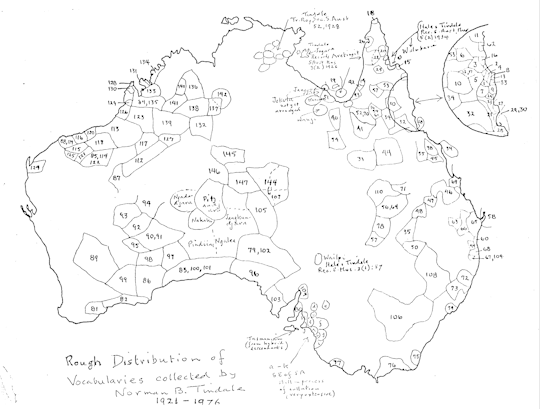
I first noticed this in Adelaide when I came across a chart that the anthropologist Norman Tindale had created, which disproved the notion of Australia as a continent that had been populated by nomadic people before the arrival of the Europeans. That afternoon I had been talking about Jacquetta Hawkes’ use of Henry Moore’s drawings of quasi-archaeological figures in her book Back to a Land to illustrate the way in which ancient sites help to shape our perceptions of a landscape. What I found particularly interesting, however, was that Tindale had used language variations to map the locations of different indigenous groups. I was reminded of this a few days later when comparing Richard Long’s circular wall-piece at the 1988 exhibition, Magiciens de la terre, to a piece by an indigenous Australian artist on the floor next to it. I had just been explaining how Long recorded his subjective impressions – including the snatches of pop songs that came into his head – and juxtaposed them with the place names on hi walks. I then remembered how one of the audience had told me that indigenous people had chosen the place names in the area because they imitated the sounds made by frogs in specific locations. They were thus useful in helping them to find their way across an otherwise undifferentiated landscape.

The preconceived way in which Long imposes lines and circles on a landscape evokes a wonderful description in Voss, Patrick White’s great novel of Australian exploration. In it the eponymous hero, who is trying to find his way across the continent, sends back his indigenous guide for help but the latter gives up since he becomes distracted by his habit of living in the moment around him. I was reminded of Voss’s hubris once again when someone told me that when gold was discovered near Melbourne the locals drew a misleading map, which indicated that their town was much closer to it than Geelong, thus ensuring the city’s future development as the state capital. Similarly, towards the end of my trip another of my hosts told me that the famous trio of explorers who discovered a trail over the Blue Mountains may have been accompanied by an indigenous guide or at the very least have followed paths that had been known to local people.
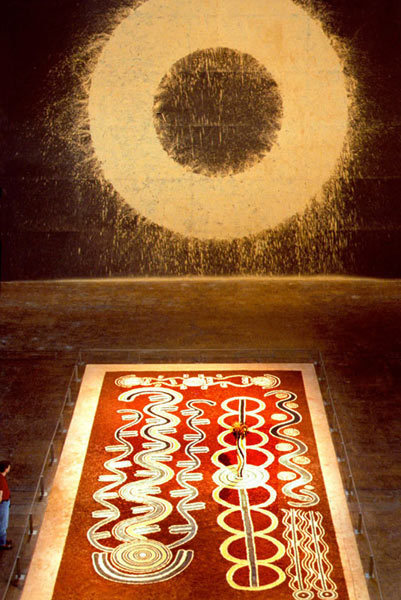
The relationship of landscape to national identity reappeared in a lecture about Munch in the form of a comparison of the romantic landscapes of the Norwegian artist, Johann Christian Dahl, to the work of the Australian painter Eugene von Guerard. Most of my lectures, however, seemed to focus on the way in which artists used the language of history painting to create statements about contemporary life. This was true of a talk about the links between Rembrandt’s Night Watch and the role of the militia at the start of the Dutch revolt and of another about Joseph Wright of Derby’s allegories of the philosophical and scientific ideas of 18th century Britain. Since several of my talks were about the European Enlightenment, I was also intrigued to discover how the artists who accompanied Baudin, the French explorer who came across Flinders in Encounter Bay, portrayed indigenous people in sympathetic poses in accordance with preconceived ideas of the ‘noble savage’ that they had derived from Lahontan and Robinson Crusoe
.

The most iconic of Australian heroes is, of course, Ned Kelly and I was fascinated to find how much Sidney Nolan’s great series about the outlaw resonated more strongly in Australia than when I had first seen it in England. The same was true of Jackson Pollock’s Blue Poles whose purchase by the National Gallery of Australia for AS$1.3m in 1973 created a political scandal for Gough Whitlam’s government. Watching Australians queue up to take their selfies with the painting – now estimated to be worth about $300 million - it seemed far more significant than it had at its recent showing at the Royal Academy or when it left the artist’s studio. Nolan explained his curious decision to to adopt a comic opera idiom for the series because he felt that the policemen who were pursuing Ned had been naïve to sleep in hammocks in the wilderness and to burn trees for warmth, which gave away their position. Indeed, there is something of the Pirates of Penzance about his portrayal of one of the members of the posse when he unwisely decides to take Ned Kelly’s wife upon his knee.


Equally hagiographic but in a very different way were the works of Rodel Tapaya, an artist from the Philippines, whose paintings were being exhibited in the gallery adjacent to the series in Canberra. His combination of south Asian animist beliefs with post-modernist extravagance and sci-fi dystopia provided an interesting contrast to the work of several indigenous Australian artists on show.
Among them were the late Rover Thomas whose laconic paintings read both as depictions of the outback and as modernist abstractions. Only when one reads the labels does one find that their titles refer to actual events in the recent history of indigenous people from the devastation of Cyclone Tracy to the shooting of a cattle rustler. Like his fellow artist from the Kimberley, Queenie McKenzie, Thomas has become an important figure in the reinterpretation of Australian history by indigenous people. One of the most recent expressions of this is the decision by the current director of the war memorial in Canberra to show paintings of the conflicts that they waged against the settlers. The huge number of young people that Australia lost in two world wars made this a controversial decision. Although comparable to the Imperial War Museum North’s display of a police shields from the miners’ strike or memorabilia from Greenham Common, its real significance can only be appreciated on the spot.
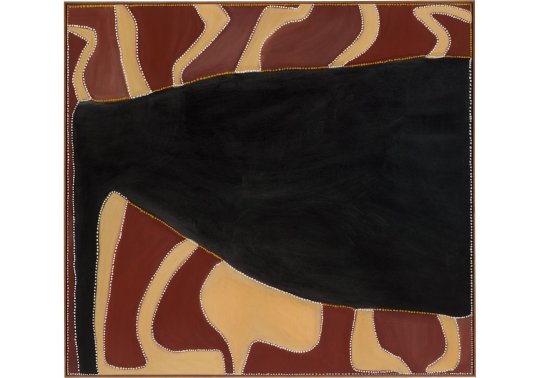
The week before I left for Australia I happened to visit Highgate Cemetery where Sidney Nolan is buried a stone’s throw from Karl Marx. Despite my best efforts, I was unable to find his grave, which is located next to a narrow path among a group of other émigrés. In retrospect, it seems a fitting metaphor for how far my journey would lead me off the map.
0 notes
Text
A Rare Category of Objects

For me Tony Cragg’s show at the Yorkshire Sculpture Park was something of a revelation. I had not seen his work since the late nineties and still associated it with a use of recycled materials and of witty, often political statements in the manner of other object sculptors such as Bill Woodrow, Richard Wentworth and Richard Deacon. The sculptures in A Rare Category of Objects at the Park are still built up from individual pieces. But to my surprise the thin slices of metal, stone and laminated wood were arranged in semi-abstract works in which visual references to the human face, The Winged Victory of Samothrace or the Willendorf Venus seemed secondary to the way they had been made.
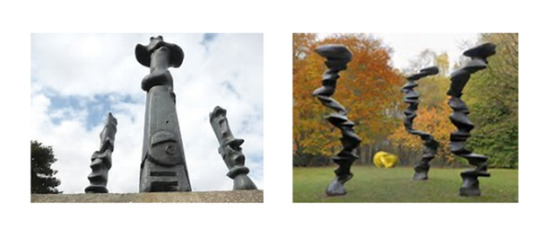
Perhaps a clue to this is in the video about the work that accompanied the exhibition. In this Cragg is interviewed in German, a reminder of the fact that he has taught in Dusseldorf since the late 1970s. In terms of materials and processes Cragg’s sculptures are reminiscent of a previous solo exhibitor at YSP, Ursula von Rydingsvard. Both artists are based in Germany and hence I was reminded of the German phrase bildende kunst - often simply translated as ‘the visual arts - whose derivation is from the words for ‘making or forming’. This places a far greater emphasis on the process through which images are formed than on their final appearance.
In addition Cragg’s systematic use of structures that explore natural form places him in a tradition that goes back to the work of D’Arcy Wentworth Thompson. The scientist believed that the laws of mathematics could be used to explain the principles of growth and form in living matter. As Edward Juler has described in an essay on the Tate website, his central tenet was that ‘every biological object was effectively a diagram of forces. Thompson’s seminal work, On Growth and Form, of 1917 helped to shape the ideas of artists as diverse as Henry Moore and Richard Hamilton. Indeed there is an obvious comparison between Henry Moore’s Golgotha and Cragg’s Points of View.

Surrealist sculptors such as Arp and Miro often used organic forms – not least as a metaphor of the way in which human beings relate to other aspects of nature. However, Cragg’s sculptures suggest more obvious comparisons to the the playfully naturalistic works of Gaudi at the Parque Guell whose mosaics can also be compared to the jigsaw surface and curvilinear forms of several of Cragg’s works. The fact that so many of the art nouveau practitioners whose works Cragg’s resembles are decorative artists raises the old chestnut of how much such applied art idioms can imply specific cultural meanings. After all, the obvious difference between Henry Moore’s Golgotha and the teetering forms of Cragg’s Points of View are the former’s iconographic references to the crucifixion.
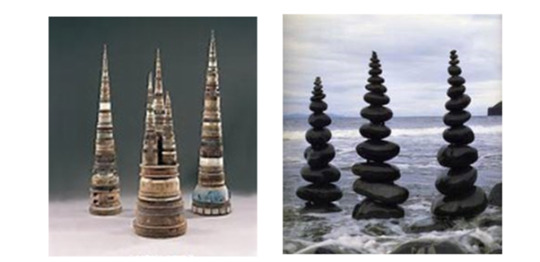
While many of Cragg’s sculptures resemble decorative pieces reminiscent of those of the glass-maker, Tiffany, the exception is Minster, the earliest work in the exhibition and the only one which comprises found objects. Here the hierarchical structure of logically diminishing forms suggests underlying references to a cathedral and to a trinity of figures. In this context it is interesting to compare it to Andy Goldsworthy’s similar trio of sculptures and to the less obviously referential work of Michael Grab, who has described himself as ‘an arranger’ of stones rather than a sculptor.
I tended to prefer the early works of Tony Cragg in the exhibition. I even found myself looking wistfully at photographs of his performance-based sculptures where he wrestled with cardboard boxes or portrayed himself in a series of deliberately banal images with his ear-flaps turned firs up and then down. In part, of course, this is because, as I get older, I am bound to fall victim to nostalgia. But it is also because I prefer the classical virtues of harmony, symmetry and proportion to the language of the language of a world in which the scientific and conceptual structures are becoming increasingly fluid and organic. Perhaps this is proof, if proof were needed, of the fact that contemporary art continues to reflect the times in which it is made.

1 note
·
View note
Text
Up on the Roof
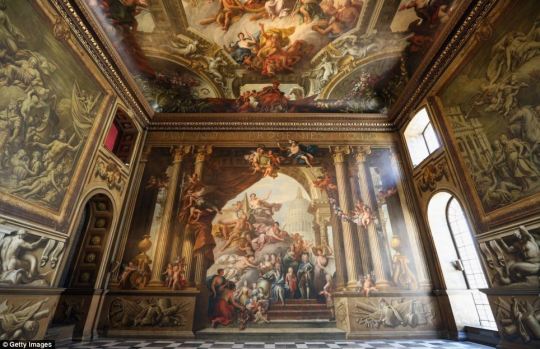
One of the great things about living in Greenwich is the opportunity to get closer to the work of the Royal Museums Greenwich and of the other venues along the river. A few weeks ago I did just that by joining a scaffolding tour to inspect the mural on the ceiling of the Painted Hall, which forms part of the former Greenwich Hospital. The mural, which is currently being cleaned, was painted by James Thornhill between 1707 and 1726. It was originally commissioned by Queen Anne to celebrate the reign of William and Mary and was extended to mark the accession of George I. As such, it complements Rubens’ earlier portrayal of Anne’s great-grandfather, James I, in the Banqueting Hall.
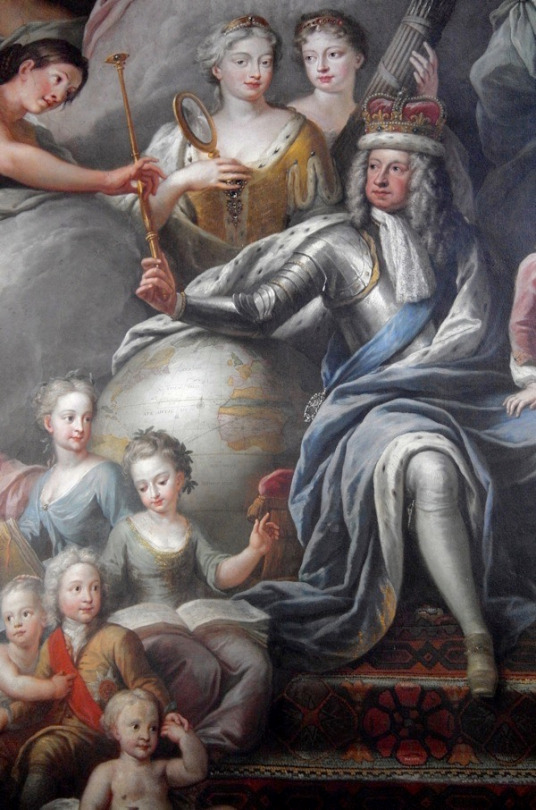
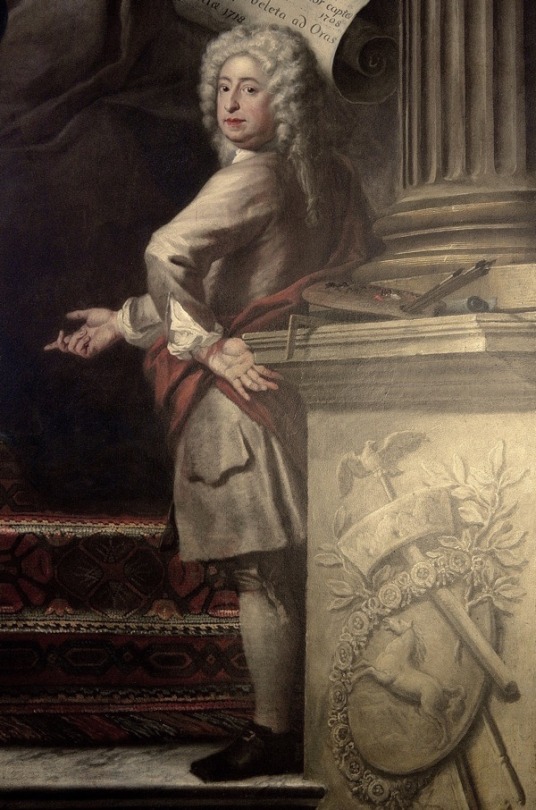
From ground level the Greenwich mural has all the baroque drama, movement and emotion of its counterpart. But having climbed the 67 steps to the viewing platform, the viewer is confronted by a murk y surface that is the colour of Brown Windsor soup. This analogy is in fact not entirely far-fetched since one of the cleaners’ first tasks will be to remove the gravy that was splashed by students when the hall was used as a dining room by the Old Royal Naval College.
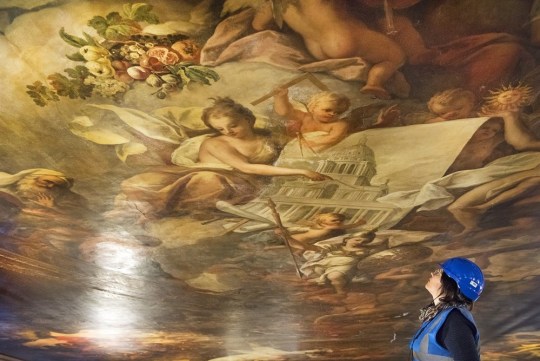
Earlier this year I gave a series of talks about the restoration of London after the Great Fire. Hence what struck me on my visit were the links between the mural and the churches that were built between 1670 and 1720. The most obvious link is to Thornhill who was commissioned to paint the murals in the dome of the cathedral afteran influential bishop had declared himself ignorant of art but determined to appoint ‘an Englishman and a Protestant’. Another important contributor was Henry Dogood who was responsible for the ornate plasterwork of the ceiling and for a similar commission at Wren’s St Mary Aldermary. Yet, perhaps, the most intriguing comparison is the resemblance of one of the female figures on the ceiling to a shallow relief on the exterior of St Mary Woolnoth. This similarity seems to confirm that both figures represent the Thames. However, its pairing with Mercury at St Mary Woolnoth is unusual since his companion is usually Minerva, the Goddess of Wisdom.
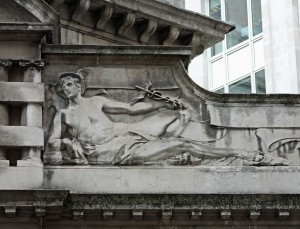
Perhaps the architect, Nicholas Hawksmoor, wanted to refer to the increasing importance of trade on the river after a generation that had seen the doubling of the navy, the founding of the Bank of England and the establishment of Lloyds. If so, he may also have wanted to have a sly dig at the merchants and bankers since Mercury is not only associated with communications and commerce but is ‘the patron of thieves’.

Hawksmoor’s long association with Greenwich began with his work on the Hospital in about 1696. It lasted until 1725 when Colen Campbell, the Whig architect and author of the Vitruvius Britannicus, was appointed as Surveyor of Greenwich. The biographer Owen Hopkins has described how Hawksmoor’s exuberant version of baroque fell out of fashion and was replaced by the more harmonious and symmetrical language of Palladianism and neo-Classicism. Greenwich is one of the best places to view Hawksmoor’s work. In his design for the King William block at the hospital one can see his first experiments with dramatic changes of scale. He almost separates the two wings of the building from the centre and then reintegrates them into the whole through a use of strong vertical and horizontal elements. At St Alfege’s, Hawksmoor’s monumental approach seems even more pronounced, as does his creation of chiaroscuro effects through projecting and setting back different elements of the façade. If Hopkins is right then St Alfege’s may be an early example of Hawksmoor’s use of metaphor and quotation. For, as at St Paul’s, there may be a reference to primitive Christian altars in the use of decorative plinths outside the church.
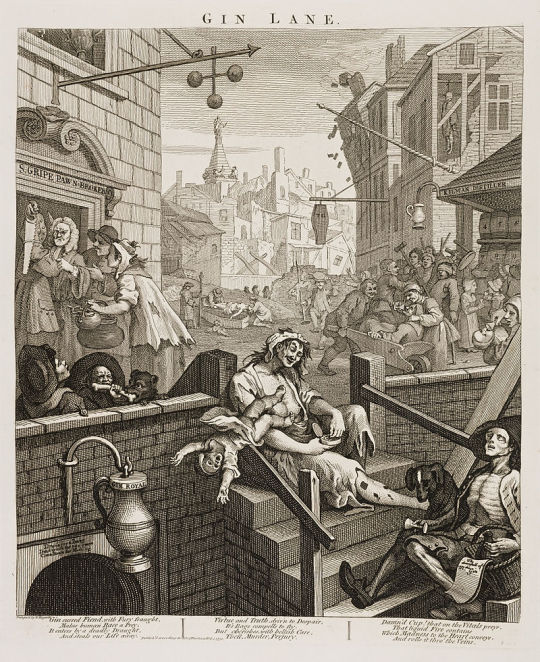
The work of Wren and Hawksmoor in making Greenwich a majestic point of entrance to the city created what Engels called in 1845 ‘a view….so vast, so impressive that a man cannot collect himself but is lost in the marvel of England’s greatness before he sets foot on English soil’. Yet at the very moment that Engels was writing Greenwich and in particular its annual fair were acquiring a reputation for drunkenness and behaviour that were quite unlike that of the genteel western suburbs of Richmond, Twickenham and Chiswick.
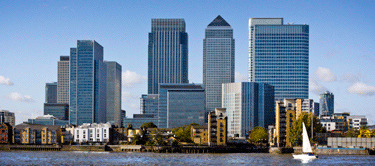
Today the view from the hill above the Royal Observatory is dominated by Canary Wharf, which has become synonymous with London’s wealth. Just as the Observatory’s discoveries helped to inspire the beginning of trade with the Pacific, so too did its association with Greenwich Mean Time help to affirm London’s importance in relation to the financial centres of New York and the Far East.
Interestingly enough, Thornhill represented two non-royals in his mural in addition to himself. One was the astronomer John Flamsteed whose prediction of an eclipse in 1715 was included in the mural a year before the event. The other was an old naval veteran from the Hospital who was allegedly often drunken whom the artist represented as Winter. Fittingly enough, Thornhill shows him warming himself at a fire in what is surely one of the most important allegories of Britain’s first commercial empire .

0 notes
Text
Reading Proust by Kindle
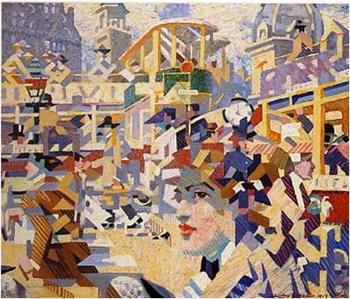
Last week I bumped into myself near Oxford Circus. Well, not me exactly but a slightly older and much cooler version of my teenage self: strap-hanging in the rush hour with one finger tucked into the first few pages of Proust and with his thumb in the Appendix. By coincidence I have been re-reading Remembrance of Things Past in preparation for some talks that I am giving about landscape painting in the 1880s and 1890s. The experience has taken me back to the Summer of Love when I attempted to read it back to back with Joyce’s Ulysses and Mrs Dalloway by Virginia Woolf. Having struggled my way through them, I read Island, Aldous Huxley’s utopian novel set in Polynesia that was influenced by his earlier mescaline experiments.
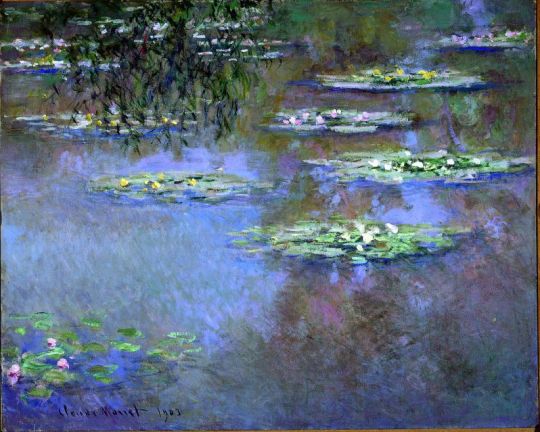
As a big fan of Kindle, I wanted to tell my doppelganger that he was getting it all wrong. To point out to him that Proust was all about the drift towards intangibility and the portrayal of inner worlds. That the author was the literary equivalent of Munch’s Nordic landscapes, the flower-strewn meadows of Gustav Klimt or the dematerialised veils of Monet’s lily-ponds. That to read him in book form and to use the notes was to expect the hand-holds and framing devices that you find in Cezanne’s portrayal of Mont St Victoire. That the novel was not a mountain but a swimming pool and that reading it on Kindle mimics the sense of disorientation that a swimmer experiences when he or she forgets how many laps they have done. Like the author’s madeleine cake, a misplaced finger can transport the reader from location 2017 to 1967 to 1913 or fast forward him into the alternative facts of Wikipedia. One can even review a list of the other items that customers had bought with it. But, rather depressingly, I found these turned out to be Adam Bede and The Vicar of Wakefield.
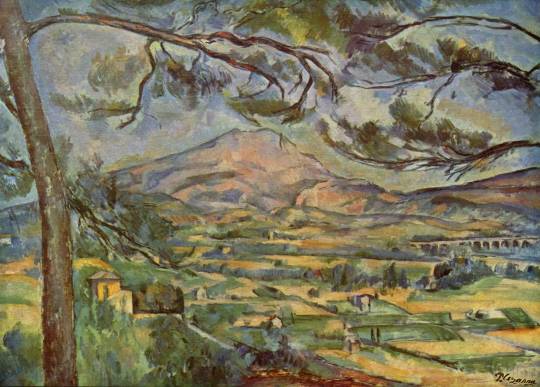
I suppose the word I’m looking for is ‘immersive’ and I was interested to see it repeated several times in the text of the V&A’s exhibition So You Say You Want a Revolution. Its celebration of the fiftieth anniversary of the Summer of Love highlights the battles for feminism, Black power and LGBT rights. It focuses on the increasing affluence of young people and compares the rival importance of LSD, the contraceptive pill and the credit card. As for ‘immersion’ - the escape from what the Symbolists of the 1890s would have called ‘the near at hand and the everyday’ - it is exemplified by the transition from the record single to the LP and the invention of the headphones. Having spotted one comparison, other analogies seemed to pop up everywhere. Not only did designers reprise the work of Mucha, Beardsley and Felicien Rops but artists such as Peter Blake, Andy Warhol and Richard Hamilton mirrored their commercial approaches by designing record sleeves. There was a widespread interest in synaesthesia and in the cross-overs between music, poetry and painting. One can compare sixties’ radicalism to the anarchism of Signac and Pissarro; the Beatles’ preoccupation with the Maharishi to theosophy; the fascination with India to the Japanese and Islamic influences of Art Nouveau; cross-gender fashions to fin-de-siècle gay identities.
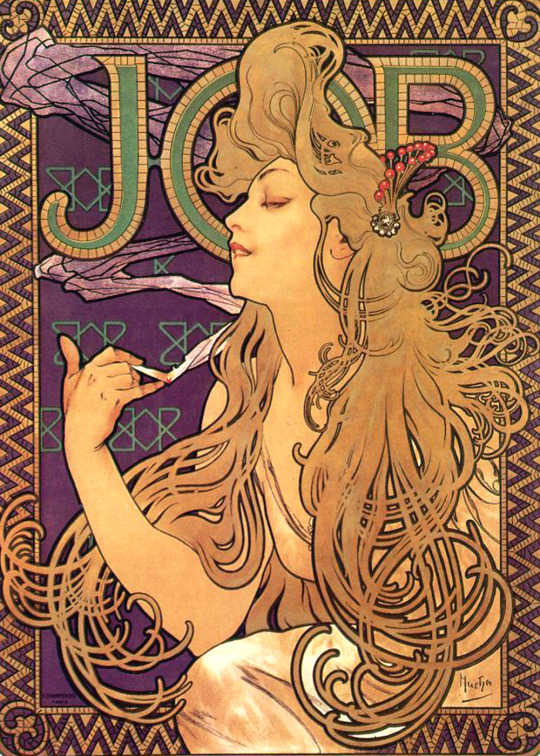
In both cases innovations in technology stimulated a new sense of identity and changed attitudes to consciousness. This can be found in Marshall McLuhan’s observation of the effect of ‘electrified media’ on ‘private thoughts and feelings’ or the impact of the photograph, the wireless and the telephone on artists such as Munch. When Francoise tells Proust’s mother that she has ‘X-ray eyes’ she evokes the widening of horizons in the 1890s from the perspective of a servant that has never left her village. Again one of Proust’s themes is the ability of his country neighbour, Swann, to create a metropolitan identity as a commuter on the same suburban rail network that took Monet to Paris. As the V&A exhibition points out, the 1960s saw a similar increase in social mobility and in the adoption of different personae that was reified by car ownership and foreign travel.

Scott Moncrieff, who translated the Kindle version in 2003, calls the novel In Search of Lost Time. Ironically, perhaps, it is more often seen as a late nineteenth century retreat into aestheticism: the equivalent of Huysmans’ Au Rebours or of Odilon Redon’s androgynous painting, Figure with Closed Eyes. The fact that Proust retired to bed for three years in order to finish it and devoted so many of its pages to describe his childhood anticipation of his mother’s goodnight kiss are in marked contrast to James Joyce and Virginia Woolf who interrupt their characters’ thoughts with the urgent demands of the cities around them. The Futurists’ preoccupation with such juxtapositions has led many designers to use their images as book covers. Hence it is tempting to compare the opiate solipsism of Redon’s Figure with the amphetamine buzz of Stanley Cursiter’s Tram. A similar contrast can be drawn between the Beatles’ A Day in the Life of 1967 and the Stones’ Street Fighting Man of 1968.
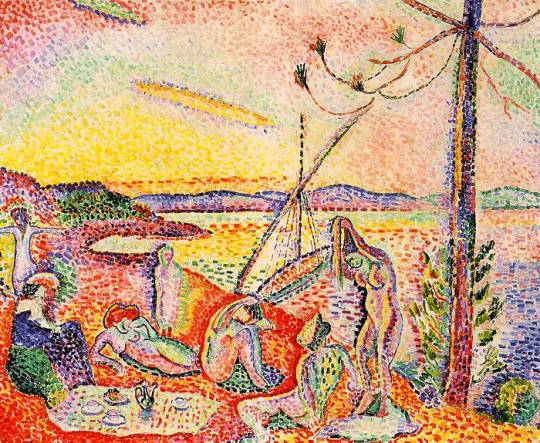
In a few weeks I am going with a Royal Academy tour to look at Matisse’s work in Provence. One of our themes will be the way in which Matisse revived the achievements of the decorative art of the 1880s. For in masterpieces such as Luxe, Calme et Volupté he seems to take Gauguin’s subject matter, Van Gogh’s colours and Seurat’s brushwork and to lift them whole and entire from the soft belly of Post-Impressionism with all the skill of a waiter removing the bones from a fish. The title is taken from Baudelaire but the work reveals a debt to Déjeuner sur L’Herbe, Cézanne’s Bathers and to Gauguin’s lost paradise of the South Seas in which he seems to have identified himself and other Europeans as the serpent. Yet it also looks forward to the spoilt Eden of the sixties: the self-conscious pool scenes that Hockney painted in California rather than the utopian nonchalance of the swimming holes at Woodstock.
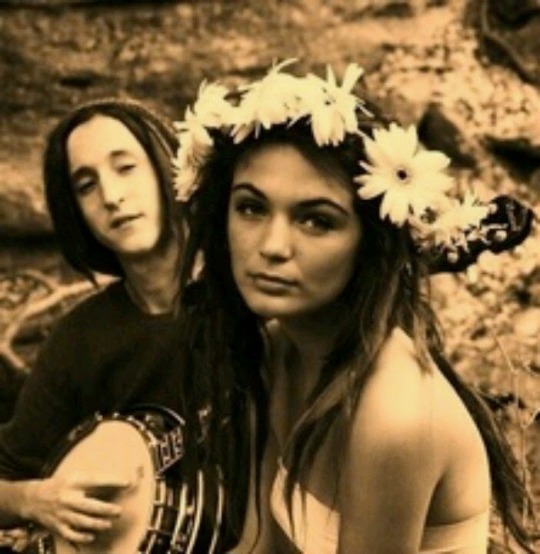
It now seems hard to explain why I wasted the Summer of Love avoiding my A level texts by reading four fictional accounts of human consciousness. Perhaps it was because 1967 coincided with the end of my acned adolescence. My parents had died three years before and I was about to enter my second year in Coventry at boarding school. Bad things were happening in Detroit, Biafra and along the Mekong Delta and my brother and I had taken refuge on the picnic rug in the back garden. Wasps and other small fears crawled towards us through the grass, only to be captured and interrogated beneath my microscope. Sergeant Pepper wiggled its way along the extension lead. From time to time I would get up and leave the Cézanne-like geometry of the lawn, cross the fauve ruin of my father’s vegetable garden and help myself to one of its surprisingly bitter fruits. At the time, of course, I thought they came from the Tree of Knowledge but my brother later told me they were cooking apples. Proust, no doubt, might well have been amused.
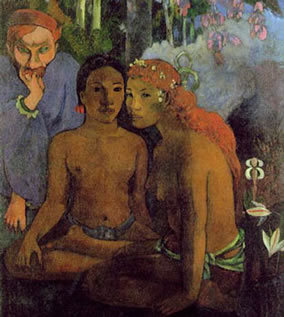
1 note
·
View note
Text
Some Like It Hot
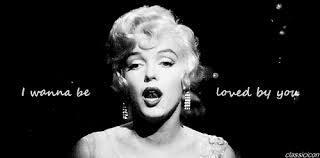
The razzmatazz of celebrity endorsements that marked the last days of Hillary Clinton’s election campaign has led me to wonder this morning which performer Donald Trump will now appoint to sing at his inauguration in December. Whoever it is, their performance is unlikely to surpass Marilyn Monroe’s notoriously suggestive rendition of Happy Birthday, which she sang to her lover Jack Kennedy in 1962. Like Bill Clinton, Kennedy was too canny a communicator to risk offending the American public at his own inauguration and chose Robert Frost to deliver a suitably impenetrable poem in an appropriately high-brow tone. Yet I was reminded of Marilyn’s scandalous performance when I visited a photographic exhibition about her that is currently showing in Aix. The exhibition cleverly juxtaposes images from her so-called ‘private’ life with those of her public persona as a model, actress and American sweetheart. Hence in the first room we see her breathlessly mouthing ‘I want to be loved by you’ in Some Like it Hot. A few rooms later she is whispering her birthday wishes to the president and further infuriating Jackie Kennedy by wearing a similarly revealing dress.

One of the delights of the exhibition is that it shows the way in which photographers were able to suggest that Monroe had just stepped away from the artificiality of the cinema cameras for a private audience with the photographer. This is as true of the publicity shots that Lee Strasberg took of her with her co-star Jane Russell on the set of Gentlemen Prefer Blondes in 1953 as it is of Lawrence Schiller’s photographs for Something’s Got to Give in 1962. Both deliberately blur the division between Monroe’s role as an actress and the public’s knowledge of her often promiscuous private life. Strasberg shows her as a glitzy, gold-digger as inaccessible as the diamonds that she covets. Ten years later Schiller depicts her as an implicitly naked but slightly dishevelled siren draping her leg over the edge of a swimming pool. The contrast speaks volumes about the changes in social as well as sexual perceptions. In the first she is a glamorous trophy and in the second the sexy neighbour who has dropped in for a pool party. As such, the latter would have been as recognizable to the readers of Playboy as to those of an early John Updike novel.

Marilyn’s ability to move between the image of the Hollywood icon and girl-next-door was apparent at least as early as the mid-fifties. In one of her earliest professional photographs taken in late 1944 she is shown as a fresh-faced munitions worker - all teeth and smiles and name-badge - cradling an aeroplane propeller in a coyly suggestive way. She reprises this natural look in her earliest swimming -costume shoots of around 1946. In one her hair blows gently in the wind. In another she perches slightly awkwardly on the diving board of a public lido.
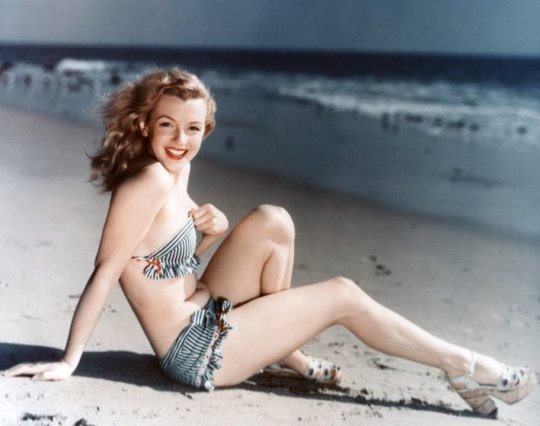
What is extraordinary about her emergence as a sexual persona is that we can pinpoint it exactly. For it was on the 22 August 1946 that Ben Lyon, the casting director of Twentieth Century Fox, re-branded her ‘Marilyn Monroe’ because of her resemblance to a now forgotten actress Marilyn Miller. At this point it is tempting to regard her as a creature of the studios: as unlike the shy young orphan who had married her first husband at sixteen as the millions of other young women who imitated her. Think of Andy Warhol and his look-alikes and his theory that everyone would have their fifteen minutes of fame. Cue Guy Debord and the Society of the Spectacle. Press play for Elton John in both the Norma Jean and Princess Diana versions.
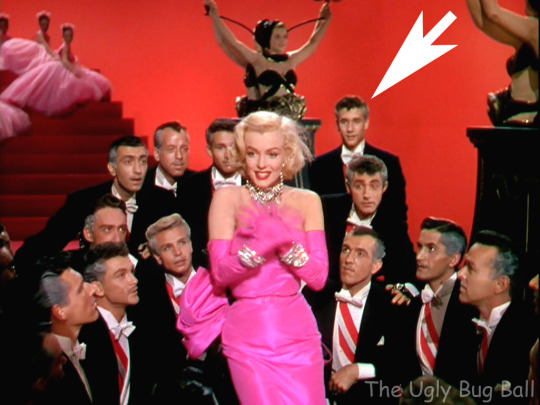
Yet to see her as a passive object is misleading for, as Richard Avedon observed, it was she that ‘invented Marilyn Monroe.’ Another of her photographers, Eve Arnold, claimed that she could transform herself in seconds for the camera through a deliberate act of will. This conscious process, which the star herself called ‘putting on Marilyn,’ gave her photographs both an extraordinary presence and an unusual sense of intimacy. It is thus interesting that so many pictures in the exhibition are of her in a liminal stage on the threshold between her transformations. This is true of the numerous photographs taken in her dressing room, with her make-up artists, on the red carpet or in the presidential library just after her 1962 performance. Many of such images from ‘behind the scenes’ deliberately recall art history. Among them are numerous shots of her as a Renaissance Venus with a mirror or in a frothy Degas dress beside a stage-light.

After her reincarnation in 1946 Marilyn exploited the variety of her assignments as a model, actress and pin-up. For example, for the publicity for How to Marry a Millionaire in 1953 she squeezed herself into a swimsuit and high heels and presented herself to the camera as a linear silhouette as simple and unforgettable as a Coke bottle. Six years later in André Dienes photographs of 1959 she returned to her natural look while juggling a similar parasol on a beach. Even where she was unable to control the photographs that were taken, such resonances proved good business. For example, in 1949 she appeared as ‘Mona Monroe’ in a nude calendar shoot because, as she later claimed, ‘she was broke and she was hungry’. Their release just as her film career took off in 1952 enabled her fans to make connections between one aspect of her work and another. Hence in promoting her movies of 1953 she only had to raise her arm in a particular way to add a sexual frisson to the pictures.
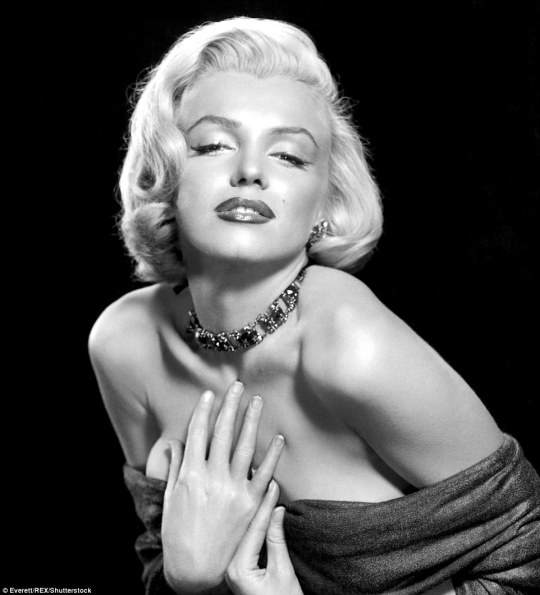
Ironically, the publicity images for these films now seem curiously old fashioned since it was at this moment that her ditzy screen presence in films such as Gentlemen Prefer Blondes defused the predatory glamour that had been associated with film noir. The then waning genre had been associated with the undermining of masculine roles in the depression and the entry of women into the workplace during World War II. The bete noire of such films was the femme fatal, which Marilyn was able to satirise in a sensuous but unthreatening way through her furs, diamonds and plunging neck-lines. Her secret weapon, of course, was her role as the dumb blonde and her deliberate over-playing of the attributes of ‘vampishness’. Such roles were eventually to inspire their own parody in the character purred by one of Marilyn’s last imitators, Kathleen Turner, in Roger Rabbit.
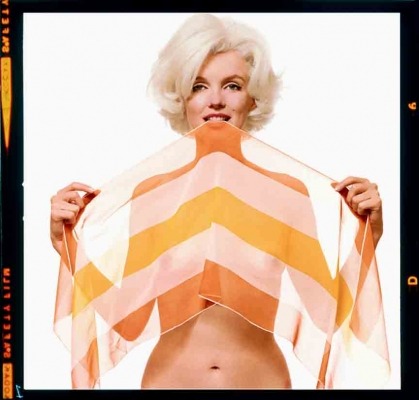
Marilyn’s capacity for self-caricature had always been an essential part of her role as an American icon. In her early photographs she appears upholstered and underwired like a cross between Mae West and the Statue of Liberty. In her final semi-naked photographs with Bert Stern she drapes what he calls ‘a stripper’s scarf’ across her breasts so that the stripes and colours resemble those of the American flag. The comparison to Jasper Johns seems irresistible just as her earlier calendar shots resemble Paolozzi’s Bunk collages based on the WWII pin-ups painted on the fuselage of American bombers. Military cheesecake was something of a theme for her. In addition to her poses in the munitions factory, she toured Korea in a battered flying jacket where she sang for the troops in a sparkly dress and high heels. The photographs, which seem to anticipate the chaotic jungle concert in Apocalypse Now, now seem to sit uneasily beside her later association with liberal politics. The defining moment of the latter was when her lover, Arthur Miller, attracted the attention of McCarthyism and she famously refused to bend to the studios’ pressure to end their relationship.
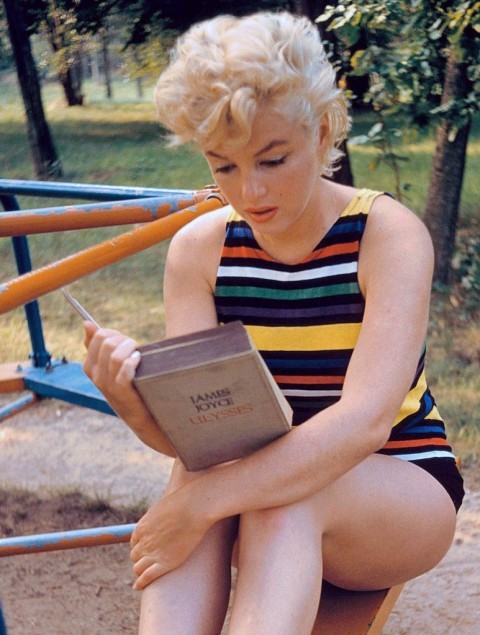
Sadly, their marriage, like her earlier ones to James Dougherty and Joe DiMaggio, was to end in failure. Yet one of its consequences was to remind photographers of her interest in literature. The exhibition included a photograph of her reading in jeans and an untidy shirt and there are other more famous ones of her with a copy of James Joyce’s Ulysses or sitting by the side of the road with a hard-backed book next to her. It is interesting to speculate how many of the three images were stage-managed. For just as 18th century portraitists knew that the inclusion of a book could convey the impression of a sitter’s inner life, so too could photographers use them to suggest their access to an unguarded moment.

A few days after the exhibition, I visited a show about the life of Emma Hamilton at the National Maritime Museum. The exhibition begins with a quote from Emma that she wished ‘to show the world that a pretty woman is not always a fool ‘. The remark from 1791 is a reminder of the fascination that Emma has exercised on feminist cultural historians. They include Susan Sontag who wrote a novel as a tribute to Emma who, even more literally than Marilyn, spent part of her life living on the edge of a volcano. As well as being a charismatic model and actress she also just happened to be, like Marilyn, the lover of some of the most famous men of her age. Both were damaged by early abuse; both led deeply unhappy lives and then went on to become the icons of their generation. Their apotheosis as celebrities was the product of social as well technical changes and the transformation of the relationship between artist, model and spectator. In the case of Marilyn these included the relaxation of censorship, the leap-forward in reprographic techniques and the proliferation of colour photography after the Second World War. In the case of Emma, it is hard to see how she would have become so famous without the industrial revolution that enabled her image to be reproduced or the huge increase in social mobility that enabled her to become the wife of an ambassador and the confidante of a queen. Like Marilyn, she was responsible for helping to redefine the way in which women were perceived in her generation through the tableaux vivants or ‘attitudes’ that she performed. As an actress, she worked with some of the best portraitists of her day and the images that they devised of her combined fine art with popular culture, the tropes of classical imagery with the contemporary and the everyday.

As for Marilyn, we may see her as a creator, like Cindy Sherman, who re-interpreted several of Marilyn’s photographs and who works in a tradition that, perhaps, owes much to Emma’s performances. Alternatively we may see her as a passive object, as Richard Hamilton implies in his collage My Marilyn, which refers to the process through which a photographer might select and hence define her image. What we cannot do is to underestimate her talents, her energy or her determination. For as Marilyn - and surely, Emma would have - pointed out: ‘There are many girls that wanted to be a star, I just wanted it the most.’
0 notes
Text
Waiting for the Macaws
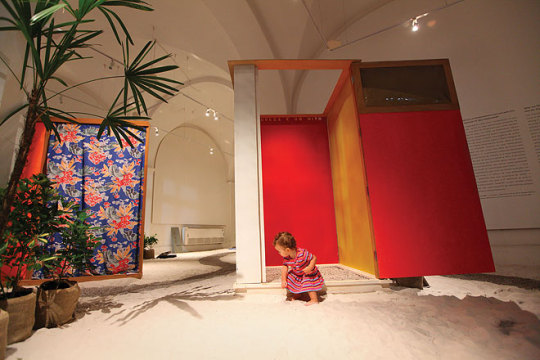
At the opening of the new extension to Tate Modern there was a small notice next to one of the exhibits. ‘Due to expected visitor numbers’, it read, ‘the macaws have temporarily been returned to their owners.’ Given the quality of the other works on show, it is unlikely that this caused much disappointment to visitors. However, the piece, Tropicalia of 1967 by the Brazilian artist Hélio Oiticica, was not just interesting in itself but somehow typical of the displays. One of the reasons was that it was a historical work by a major artist from outside Europe and the States that had probably been languishing in the basement since I last saw it at Tate Liverpool. Another was because it used a range of unfamiliar materials and involved a partnership with another artist - in this case a Brazilian poet. More importantly, it encouraged the public to approach it in an interactive, open-ended way like the child I watched wandering at will between the sandy paths, the pot plants and beach huts.
All of these characteristics were true of the rubber floor- map of Beirut by Marwan Rechmaoui. Most of them also applied to Julie Mehretu’s images of protests in Tahir Square and New York and Nil Yalter’s photographs of the dispossessed in Istanbul and Paris. Nearby Boris Mikhailov’s display of photographs seemed random until one noticed that their common inclusion of the colour red underlined the harsh realities of life in the former Soviet Union. And if anyone had missed the point about the Tate’s commitment to globalisation, they only had to look at Kader Attia’s work on the opposite wall. For here the Algerian artist was showing a piece about the debt which Le Corbusier owed to north African architecture and how this had filtered down to the French housing projects that now housed immigrant families.

As for collaborative works, perhaps the most striking was a piece by Suzanne Lacy from 1987, which recorded a meeting of 430 American older women. From the previous decade was work by Margaret Harrison made with the strikers at the Metal Box Company and folk images by Anna Lucas that she had created with Romanian women. Mona Hatoum had included a similar textile piece made with Palestinian women in her temporary exhibition. The bridge between the old and new spaces underlined such comparisons. Hence just a few steps from Hatoum’s uncomfortable portrayal of domestic objects was an equally disquieting work by Louise Bourgeois in the new space reserved for single person shows.
More whimsical partnerships involved Charles Atlas’s exploration with Merce Cunningham and John Cage of their respective joint injuries. They cropped up again in the small pole that André Cadere took to leaning against the wall at other artists’ openings. In contrast to this rather arbitrary Duchamp-like work, the Brazilian woman artist, Jac Leirner, had made a piece that comprised eight ready-made spirit levels which, she claimed, ‘contained the knowledge and skill of their users’.
After all these goodies, I found the installations in the newly-restored oil tanks of the former power station slightly disappointing. In contrast my son spent an entire two hours watching a film by a South Asian film-maker about young men racing to take part in a utopian project that had been devised by the artist. It occurred to me that the curators might have included it as a sly metaphor for the new space. Yet, there was no such irony in the stunning views that are available from the rooftop. Robert Hughes once suggested that one of the inspirations for the change in sensibility that marked the beginning of the twentieth century was the experience of seeing the world for the first time from above. This seems to be borne out by contemporary accounts of visiting the Eiffel Tower or, in the case of Georgia O’Keeffe, of her later ascent in an aeroplane. If he is right - and in the unlikely event that it is still true - we can expect another great generation of artists. If not, we can still look forward to the return of the macaws.
0 notes
Text
Georgia O’Keeffe: From Sea to Shining Sea

About half-way through Georgia O’Keeffe’s exhibition at Tate Modern I began to wonder if, perhaps, the Tate ought to have promoted the show as a group exhibition since it included so much work by other artists including her long-term partner, Edward Stieglitz, and two other photographers Edward Weston and Ansel Adams in New Mexico. The cross-over with these cannot just be explained in terms of their common subject matter. Nevertheless, it is fascinating to compare O’Keeffe’s work to Stieglitz’s pictures of skyscrapers in New York or Ansel Adam’s extraordinary Moonrise, Hernandez’, a nocturnal photograph of the church that was one of her frequent subjects. As the curators point out, O’Keeffe’s debt to photography is not just confined to the influence of Paul Strand on her use of flattened perspectives. It is rather because, as she herself acknowledged, she had a habit of seeing the world like a photographer, thus anticipating by more than half a century Susan Sontag’s claim that she found no need to take photographs because she was always busy framing imaginary ones in her head.
The show also demonstrates the similarity of O’Keeffe’s early works to the simplified geometry of other American Modernists such as Charles Sheeler. At times her early paintings of flowers have a mechanical, schematic quality that reminded me of the cold, ceramic-like surfaces of Tamara de Lempicka. What saved her from over-stylisation was her interest in developing an art of national identity. In this she was not alone. The same could be said about Thomas Hart Benton or Aaron Copeland’s cowboy themes or the scenes of rural life taken by photographers such as Dorothea Lange in the Dust Bowl. Indeed, from the 1930s onwards the search for imagery rooted in the land appears to have been ubiquitous. It can be found in Moore and Hepworth’s response to the contemporary fashion for archaeology or the landscapes that Nash, Piper, Bawden and Ravilious painted on the south coast. It is also analogous to the work of Rita Angus in New Zealand or Margaret Preston in Australia. In the latter case there are interesting comparisons to O’Keeffe in their rethinking of the often maligned practice of flower painting.
The common factor among all these artists was their desire to avoid the contemporary ‘one-size-fits-all’ preoccupation with geometric abstraction. In O’Keeffe’s case, she did this in part by adopting a quasi-religious manner that elevated her ‘dark and light’ canyons or her church at Taos to the level of an epiphany. Once again a comparison can be made to the work of Rita Angus since the Christmas-card-like clarity of her Cross at Taos recalls the portrait that Angus painted of herself as the Virgin Mary.Such links are more interesting than the frequent comparisons of her flower paintings to female genitalia, an allusion that O’Keeffe was always eager to deny and which she said had more to do with the minds of her critics than with her works. The curators endorse her denial. However, in rebutting the arguments of feminist artists such as Judy Chicago, they play down the fact that O’Keeffe’s works avoid the dramatic gestures and the dominant central imagery of the more obviously self-regarding male Abstract Expressionist painters that followed her.

In truth arguments about whether O’Keeffe’s paintings are ‘feminist’ are now overshadowed by a recognition of the importance her iconic vision of America. The fact that it embraces the skyscrapers of New York, the landscapes of New England and the rocky canyons of the American south west is all the more impressive.
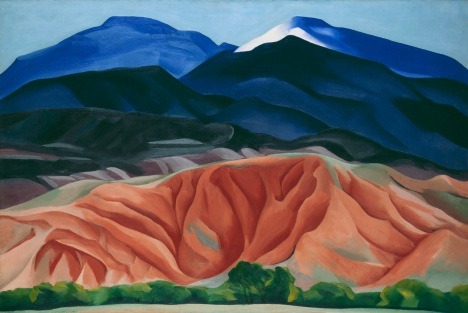
1 note
·
View note
Text
Putting on the Style
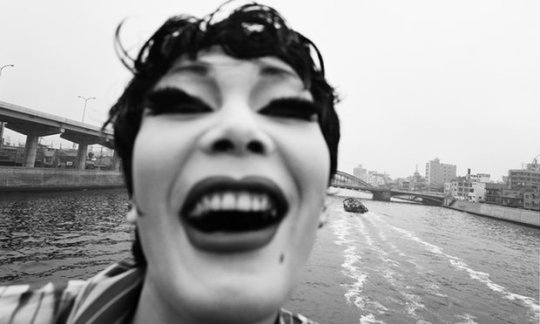
One of the artists in Electronic Superhighway, Amalia Ulman - see blog below - also appears in Performing for the Camera. This survey of photography and performance at Tate Modern includes familiar works by Yves Klein, Jeff Koons, Yayoi Kusama and Stuart Brisley. There is also the usual line-up of works about image and identity from Cindy Sherman to Samuel Fosso’s brilliant re-imagining of himself in the guise of a pantheon of African heroes.
More interesting, perhaps, is an extraordinary collaboration, Kamaitachi of 1969 by the photographer Eikoh Hosoe, and the dancer, Tasumi Hijikata which redefines the relationship between performer and the person behind the camera. In Hannah Wilke’s work this blurring of roles is even more significant. This is because in her aptly-named Strip she challenges male viewers to decide not just where to look but exactly when to take a photograph as she removes her clothes in front of them.
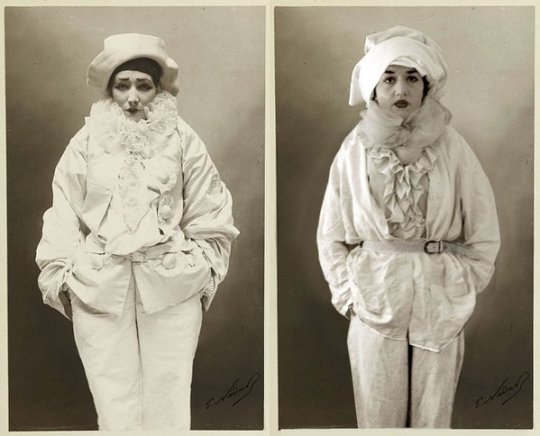
For me, however, some of the stand-out works in the exhibition were early pieces such as Sarah Bernhardt’s self-portrayal as Pierrot Assassin in 1883 and Theodora in 1884. The first is like a bridge between Watteau’s clowns and Picasso’s Blue Period. The latter evokes the heady, overdressed world of Klimt’s heroines and the sensuality of the fin de siècle.
I was reminded of Sarah Bernhardt last week when talking about Emma Hamilton, the actress and lover of Lord Nelson, who created a series of ‘attitudes’ to illustrate emotions such as fear, anger, compassion etc. She was painted in this way by Romney and Elizabeth Vigée le Brun and the practice - often in flimsy clothing and subdued lighting and - was taken up by women such as Caroline, the wife of the Prince Regent, whose lewd cavorting scandalised her dinner guests. Goethe, who attended one of Emma’s performances in Italy, described how her husband, the great collector and ambassador William Hamilton, ‘held the lamp’ while his wife went through her repertoire.

Emma’s celebrity was made possible by the reprographic breakthroughs of the industrial revolution and took place at a time in which notions of femininity were being revolutionised by social and cultural factors such as the development of the novel. As one of the world’s first pin-ups, her life evokes both comparisons with those of Henry Miller and Monroe and the preoccupation with the gaze that informs much of the work in Performing for the Camera.
An exhibition about the work of Emma Hamilton to which I am happy to accompany groups will be shown at the National Maritime Museum, Greenwich, this autumn.
1 note
·
View note
Text
In Search of a Three-Point Plug?

What’s not to like about the exhibition, Electronic Superhighway, at the Whitechapel Gallery? Despite the slight frustration of finding that this survey from 1966 - 2016 is laid out in reverse, this is the most impressive exhibition about art and new technology in years. Among the early exhibits are works by Robert Rauschenberg and Stan VanDerBeek from two seminal exhibitions: the American Theatre and Engineering of 1966 and the ICA’s Cybernetic Serendipity of 1968. These set the scene for an ongoing dialogue between computers and other kinds of avant-garde practice such as op-art, systems and performance. Such correlations are continued in works such as Judith Barry’s Space Invaders of 1981 or Lynn Hershman Leeson’s video fantasy Seduction of a Cyborg of 1994.

The exhibition suggests interesting comparisons between the use of computers by the state to tag and classify its citizens and artists’ private manipulation of social media. Among the former are James Bridle’s Homo Sacer about identity and surveillance. In the latter category is Amalia Ulman’s Excellences & Perfections in which somewhat predictably she present herself through a series of alter egos.
Far more surprising is the fun which artists such as Nam June Paik, Joseph Beuys and Allan Kaprow have with early satellite transmissions. Their enthusiasm is mirrored by later works such as Ryan Trecartin’s hilarious A Family Finds Entertainment of 2004 or Eva and Franco Mattes’ My Generation, a wry homily on domestic and technological meltdown, which they present on a broken computer. Elsewhere Camille Henrot’s Grosse Fatigue of 2013 provides a welcome relief to the endless saturation of the internet by distilling the history of the universe into a sequence of beautiful chosen images.
1 note
·
View note
Text
Painting the Modern Garden
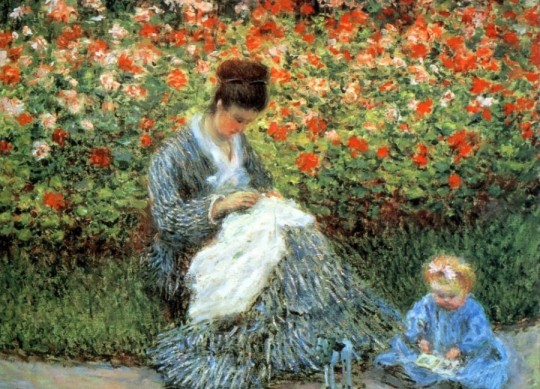
The obsession of Nikolai Astrup - see blog below - with his garden might have made him a likely candidate for the current exhibition, Painting the Modern Garden: Monet to Matisse at the Royal Academy.
However, given that flower-paintings were one of the few subjects recommended for women artists, the real omission is the inclusion of so few paintings by women. The curators’ emphasis on Post-Impressionism and Fauvism may have dissuaded them from including artists such as Natalia Goncharova or Paula Modersohn Becker. Yet the decision seems to underline the typical late nineteenth century association of flowers with femininity in the work of Renoir, Bonnard, Sorolla and Monet. With the honourable exception of Pissarro’s vegetable gardens, there is also a slightly saccharine uniformity to some of the rooms in the exhibition that makes it appear not so much a working dog as a pet.
Monet, the main protagonist of the show, claimed that flowers inspired him to become a painter and that he was good at little else other than gardening and painting. In this context it might have been useful to have included a flower piece by Boudin, one of Monet’s early mentors, rather than the comparison between Monet and Renoir that the exhibition illustrates. It might also have provided a relief from the inclusion of large numbers of works by artists who are lesser known and who are not always so impressive. Le Sidaner is typical of this since, despite the organisers’ claim that Proust was enthusiastic about his work, the description that the novelist actually gives to him in Sodom and Gomorrah is as a painter that is ‘highly distinguished’ but ‘not great’.

Monet’s works in the last rooms of the exhibition reveal how close his paintings of Giverny are to those of his other contemporary subjects. As elsewhere, he combines an obsessive attempt to capture nature in different lights with a range of fin-de-siècle concerns. These include the de-materialisation of the object, the creation of ‘all-over’ paintings and the imitation of Chinese and Japanese influences. In the hot-house world of late nineteenth century symbolism, it is interesting to note that Monet himself visited Norway in the 1890s. His paintings of recall those of contemporary Scandinavian artists but would not seem out of place alongside his portrayals of haystacks, cathedrals and even Giverny itself.
This spring and summer I am accompanying groups to galleries in Norway, Provence and to the third festival of Impressionism in Normandy. Please send me an email, using the contact buttons, if you would like to receive details.
0 notes
Text
Northern Lights
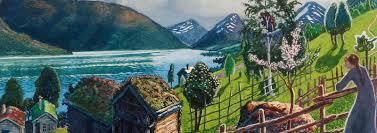
The organisers of the exhibition of Nikolai Astrup’s work at the Dulwich Picture Gallery compare his paintings to that of his fellow Norwegian and contemporary Munch. This is hardly surprising since both had unsettled childhoods and suffered from what Astrup called ‘nerves and bad moods’. In Astrup’s case this included long bouts of illness spent at his father’s remote Lutheran parsonage where ‘the view from each window seemed like a world unto itself’. Like Munch, Astrup alluded to Nordic myths and folk-tales, as in his portrayal of the troll-like shadows behind a mid-summer bonfire or his references to Nokken, the white stallion that carries its victims to their death. Even where his pictures do not contain the impression of a figure, as in the monstrous tree in Spring Night and Willow, they appear animated by an unseen presence in ways that recall the work of another Norwegian contemporary, Eiliff Peterssen.
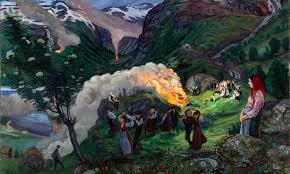
The most obvious comparison to Munch lies in the artists’ use of an expressionist brushwork and drawing style to portray the remoteness of the Scandinavian landscape and the outlandish colours of the midnight sun. Such colours were closely associated with Scandinavia and were typified by the work of the Finnish artist Askeli Gallen-Kallela. As the organisers of the exhibition point out, they are in part a product of the clarity of the light, which Astrup noted encouraged people to see ‘bushes and bluffs in the mountains nearly as freshly and sharply as the things in the foreground’..

Such colours, however, also evoke parallels with Van Gogh and with the Viennese obsession with ‘the nervous, the monstrous, the magical and the mystical’. In the same way Astrup’s experiments with wood-block engraving recall not just Munch’s use of printmaking but Gauguin’s self-consciously primitive images and the Japanese prints that Astrup admired during an early visit in Paris.
The apparitional, dream-like quality of his prints is enhanced by changes in scale and exaggerations of perspective. Such characteristics reappear in the beautiful oil painting Night Scene with Rhubarb Plants and Goose. Here the figure is seen from behind in an unreal space that adds a mysterious, ritualistic quality to her actions in ways that recall the enigmatic world of Stanley Spencer.
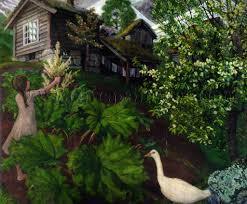
0 notes